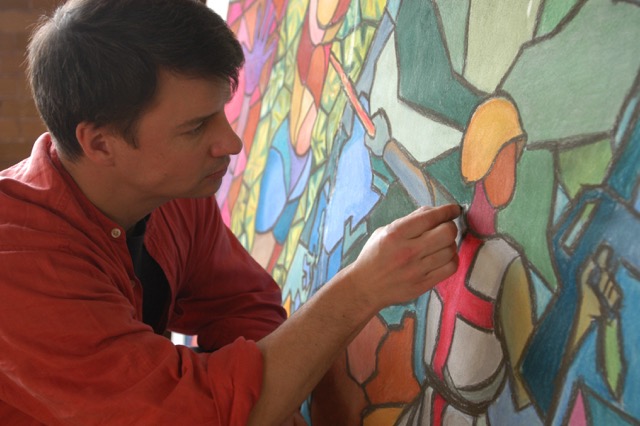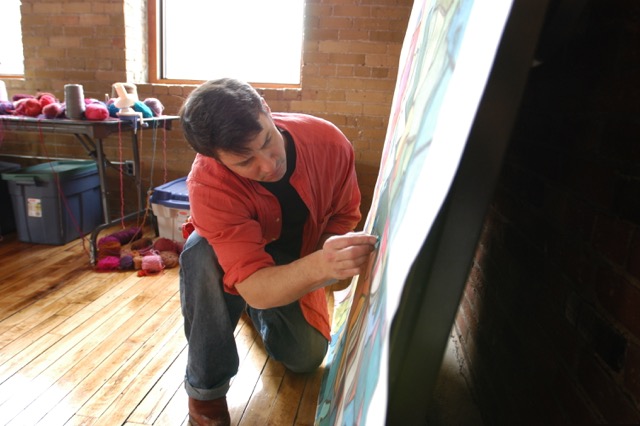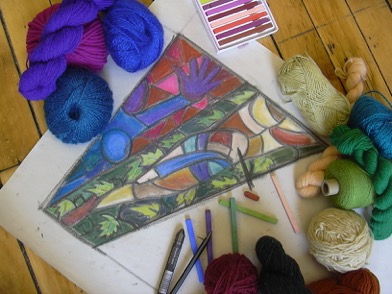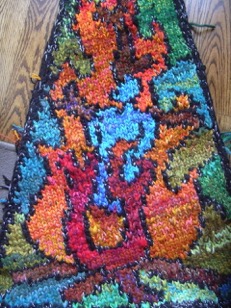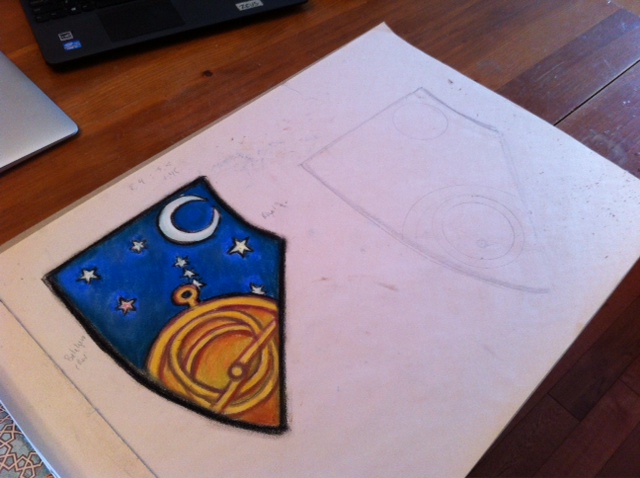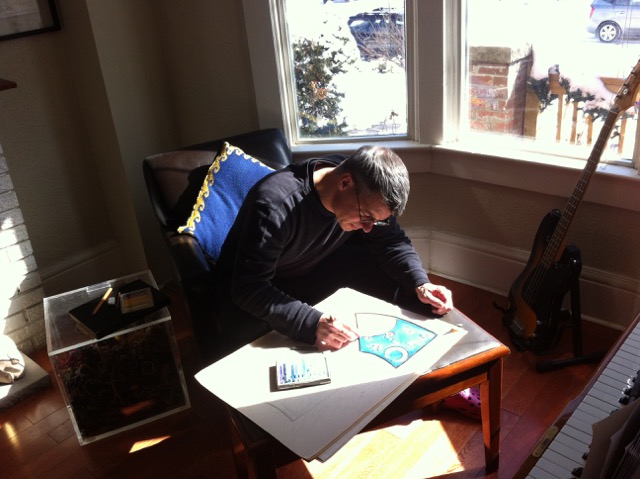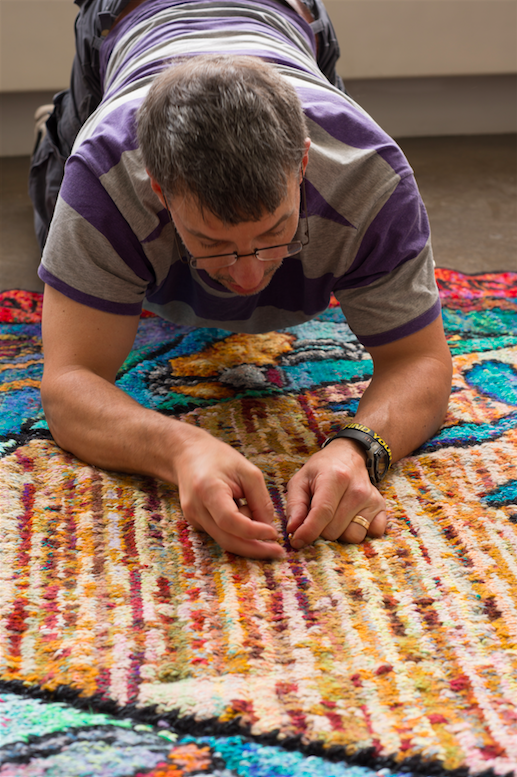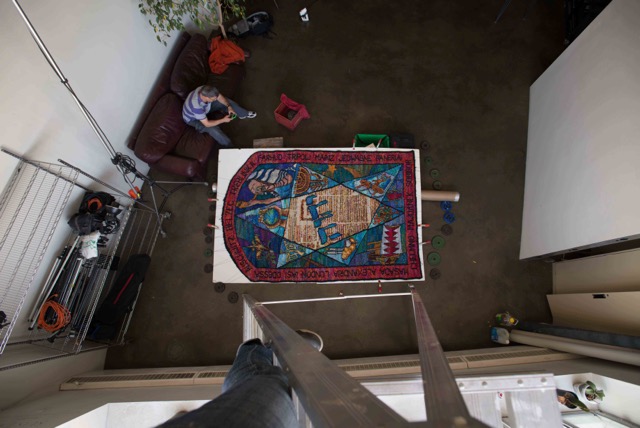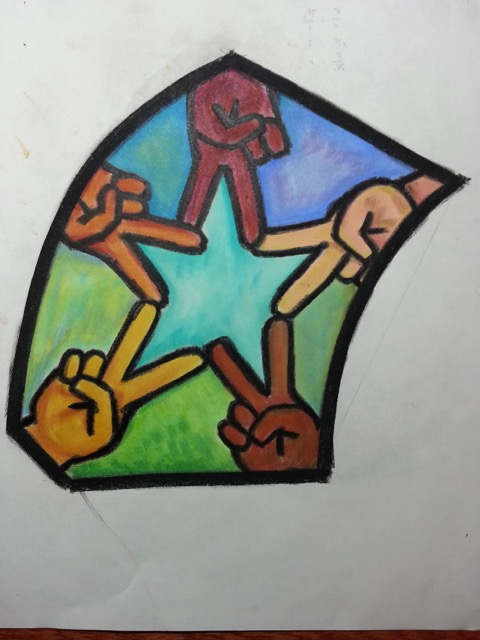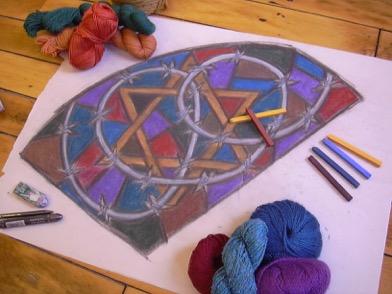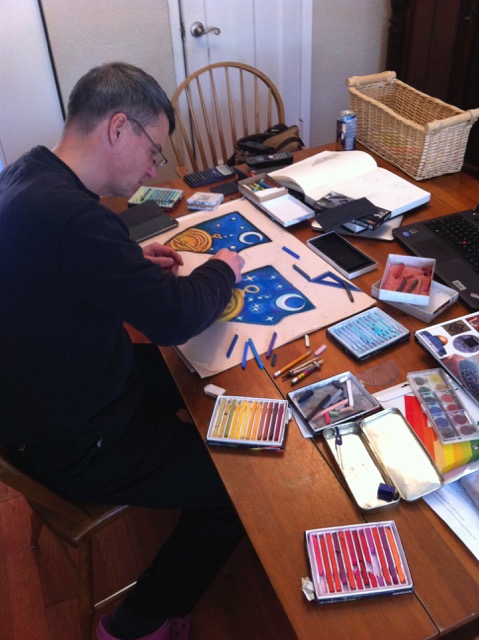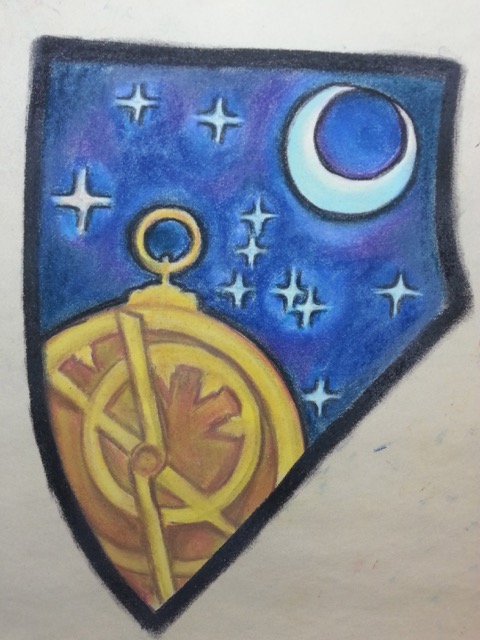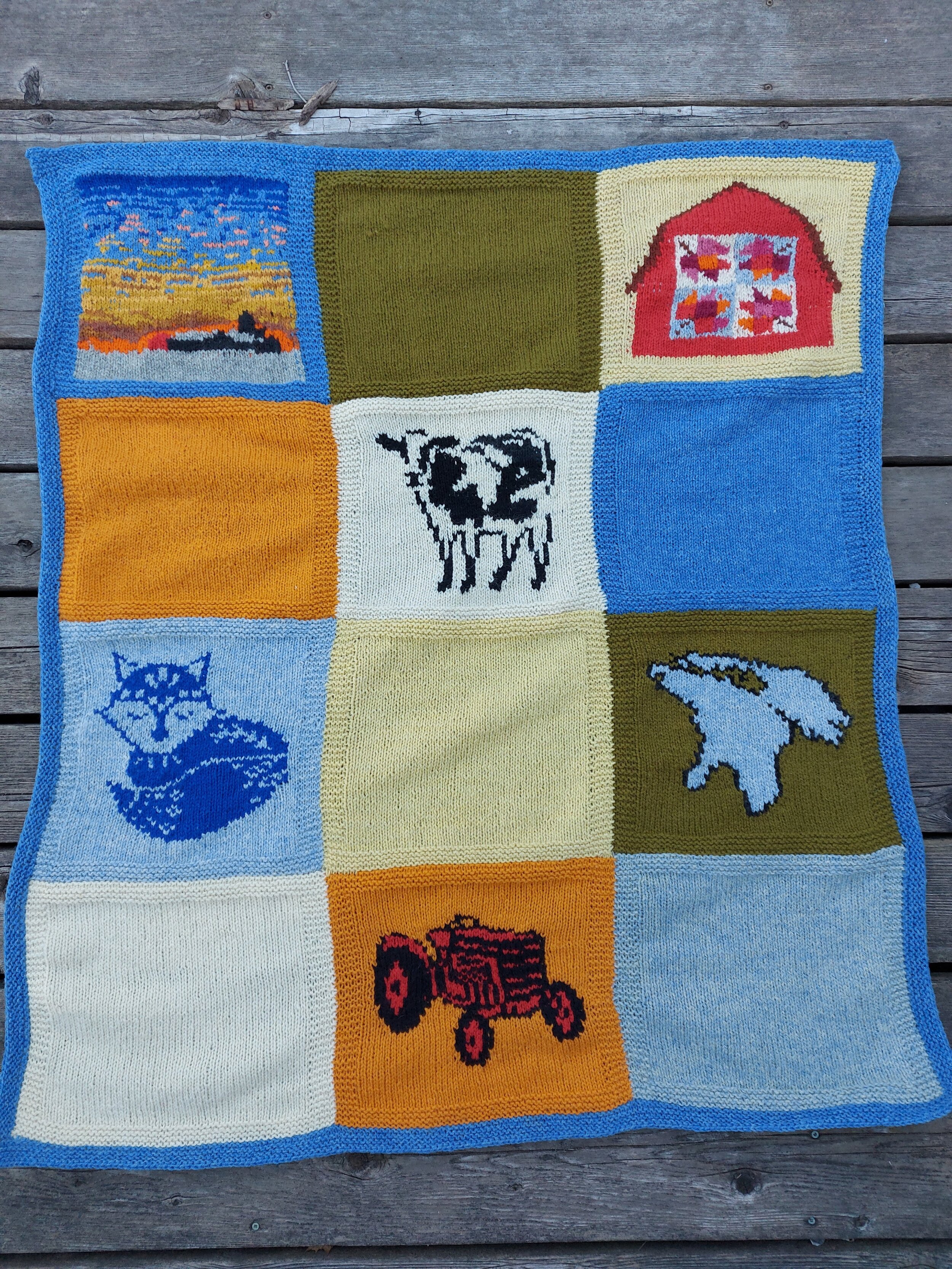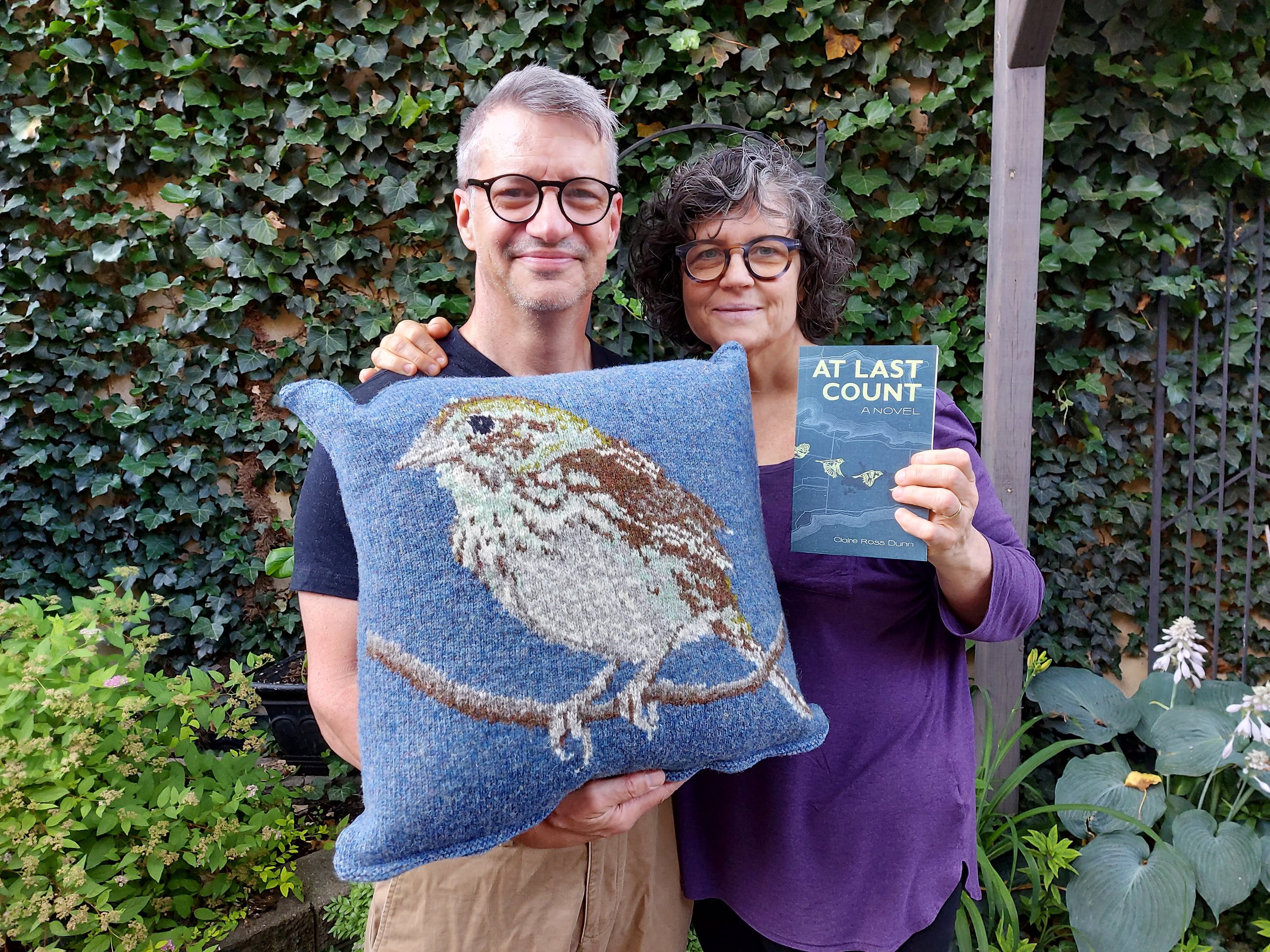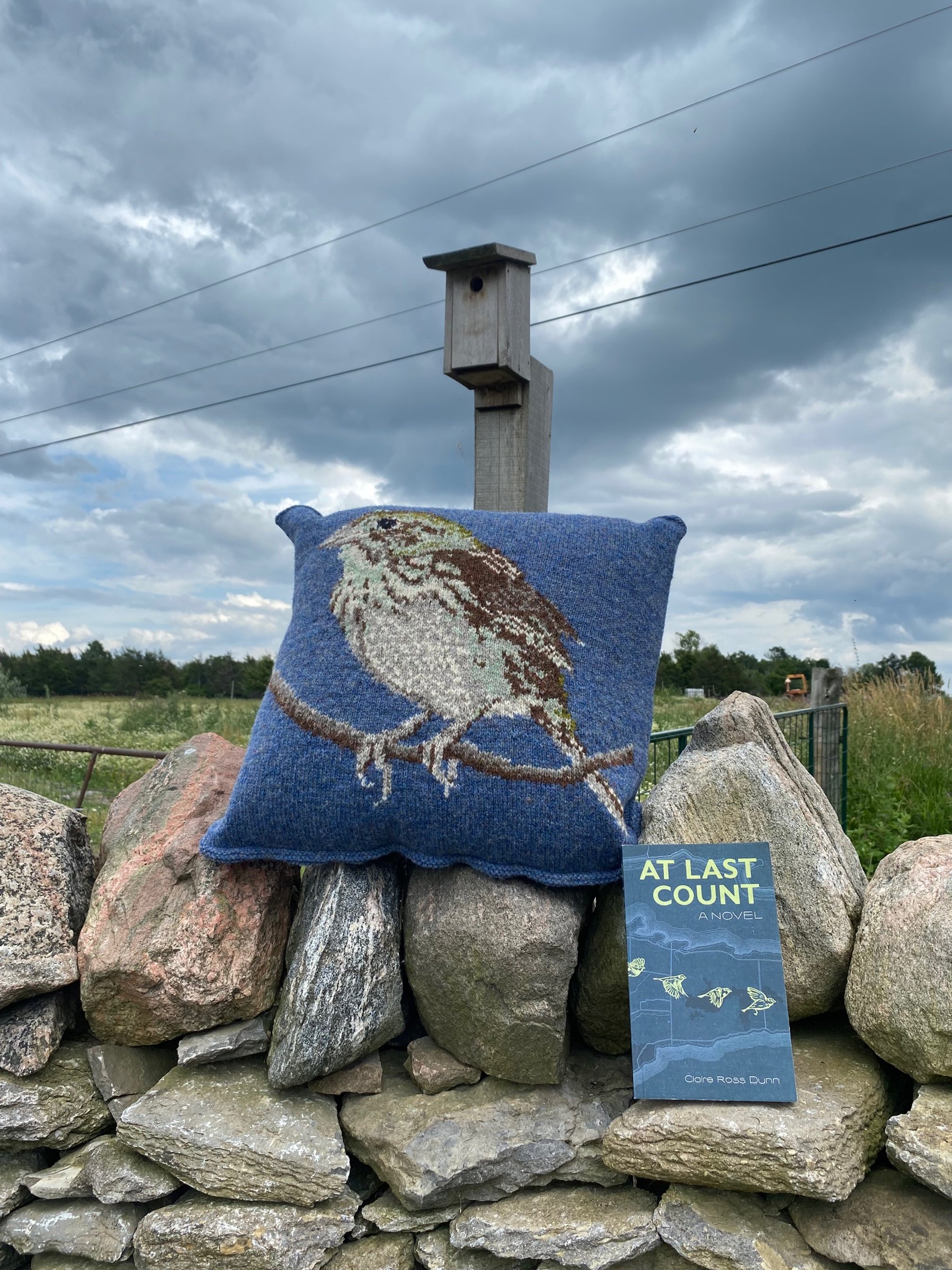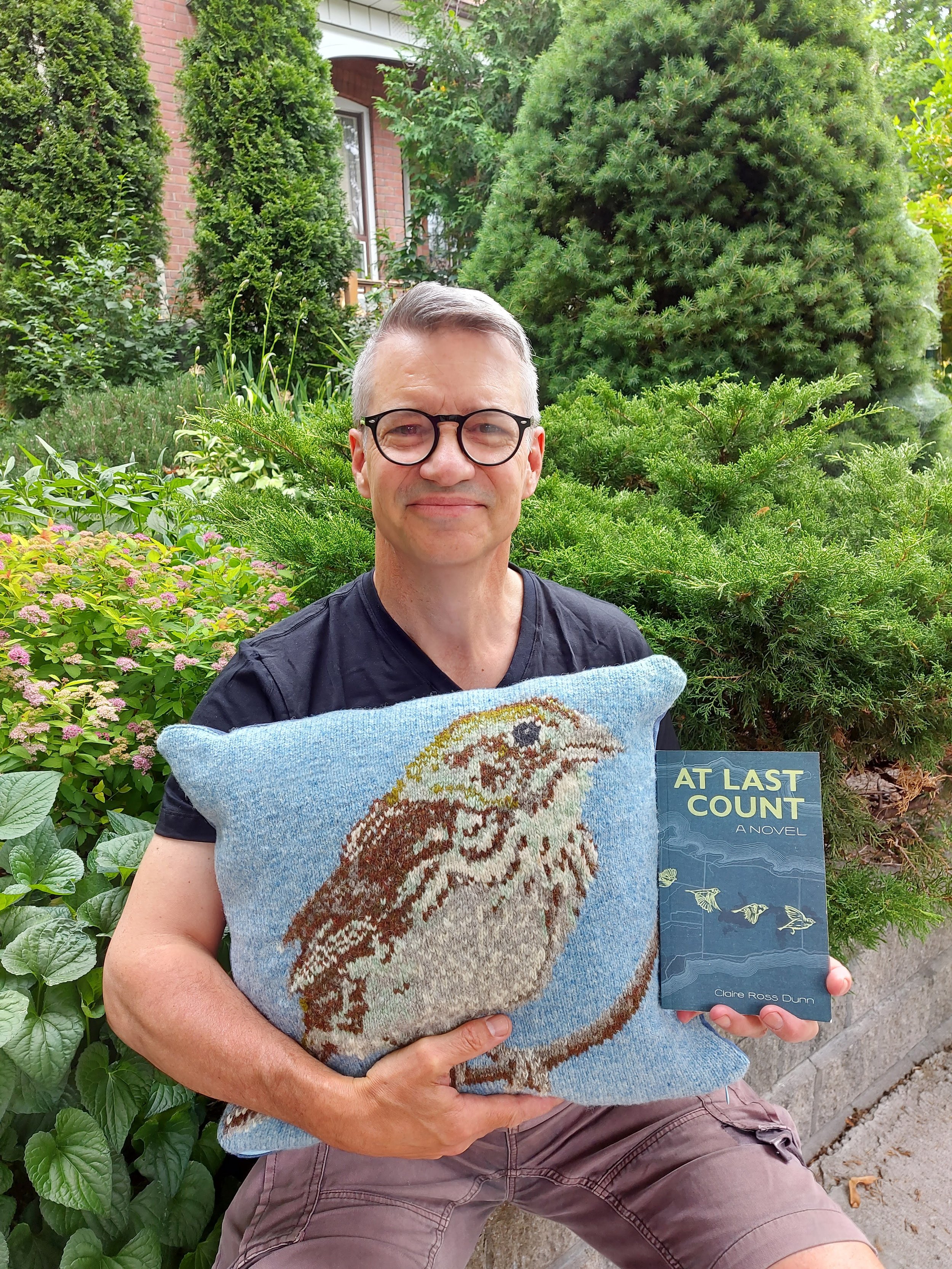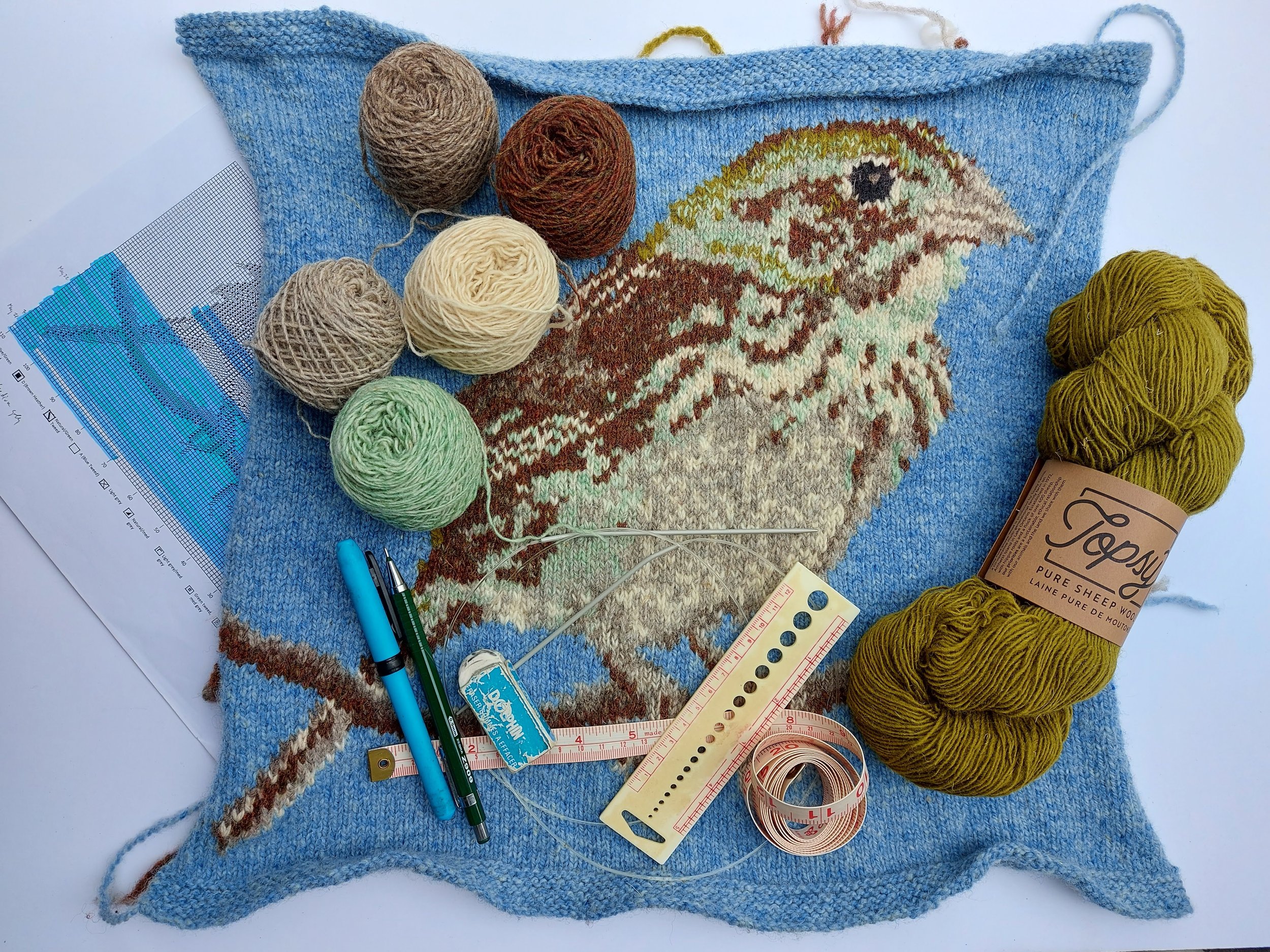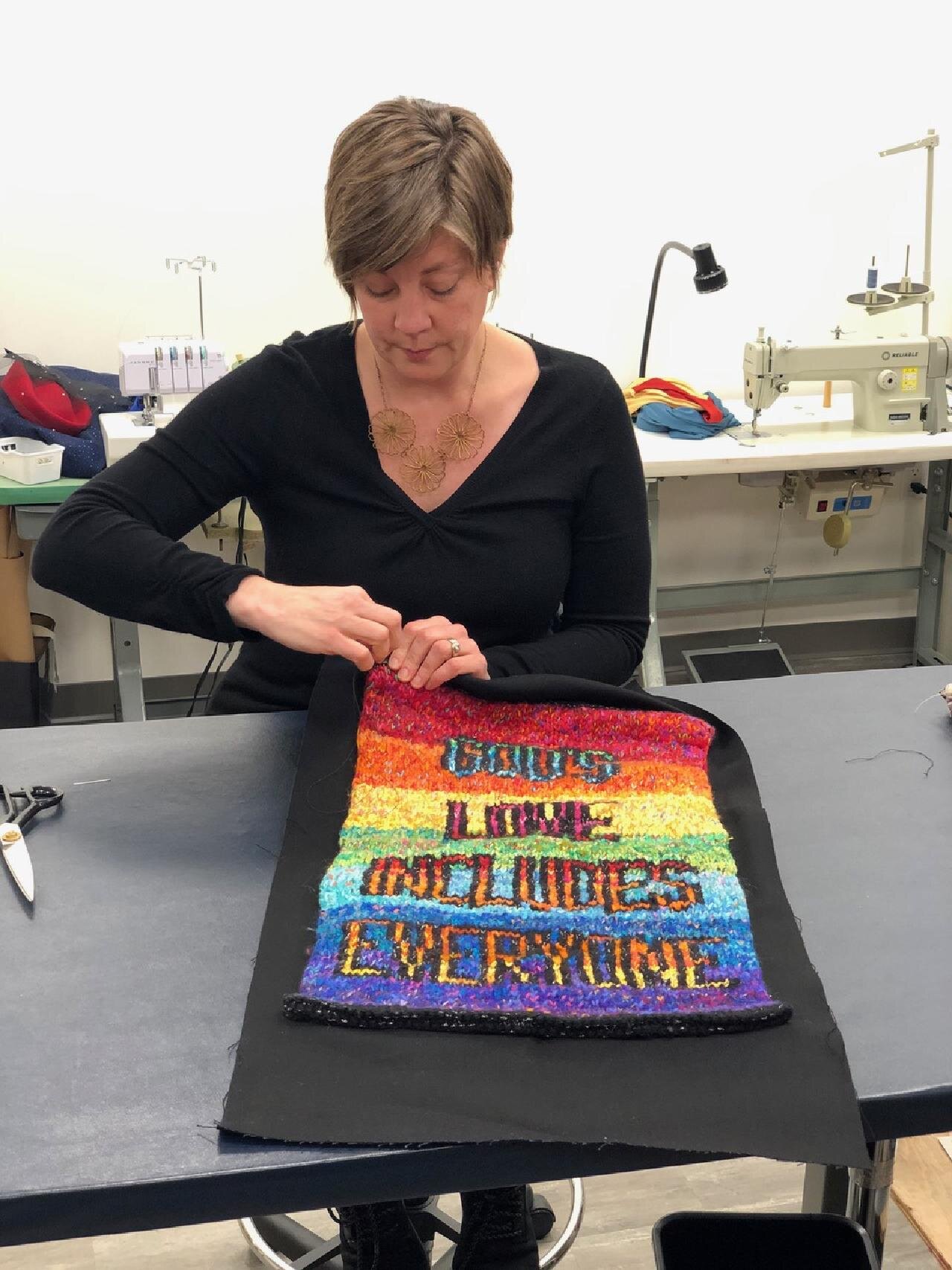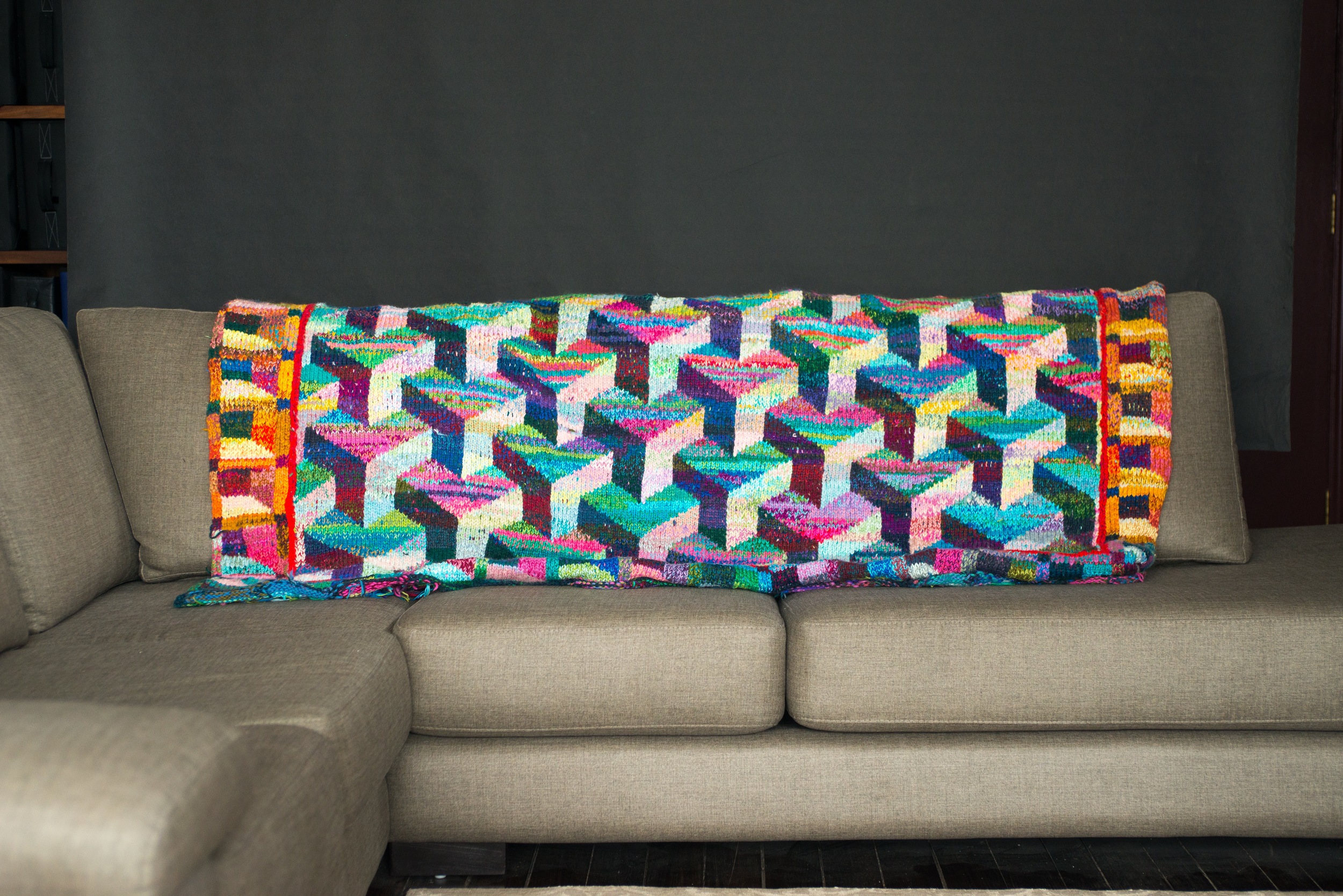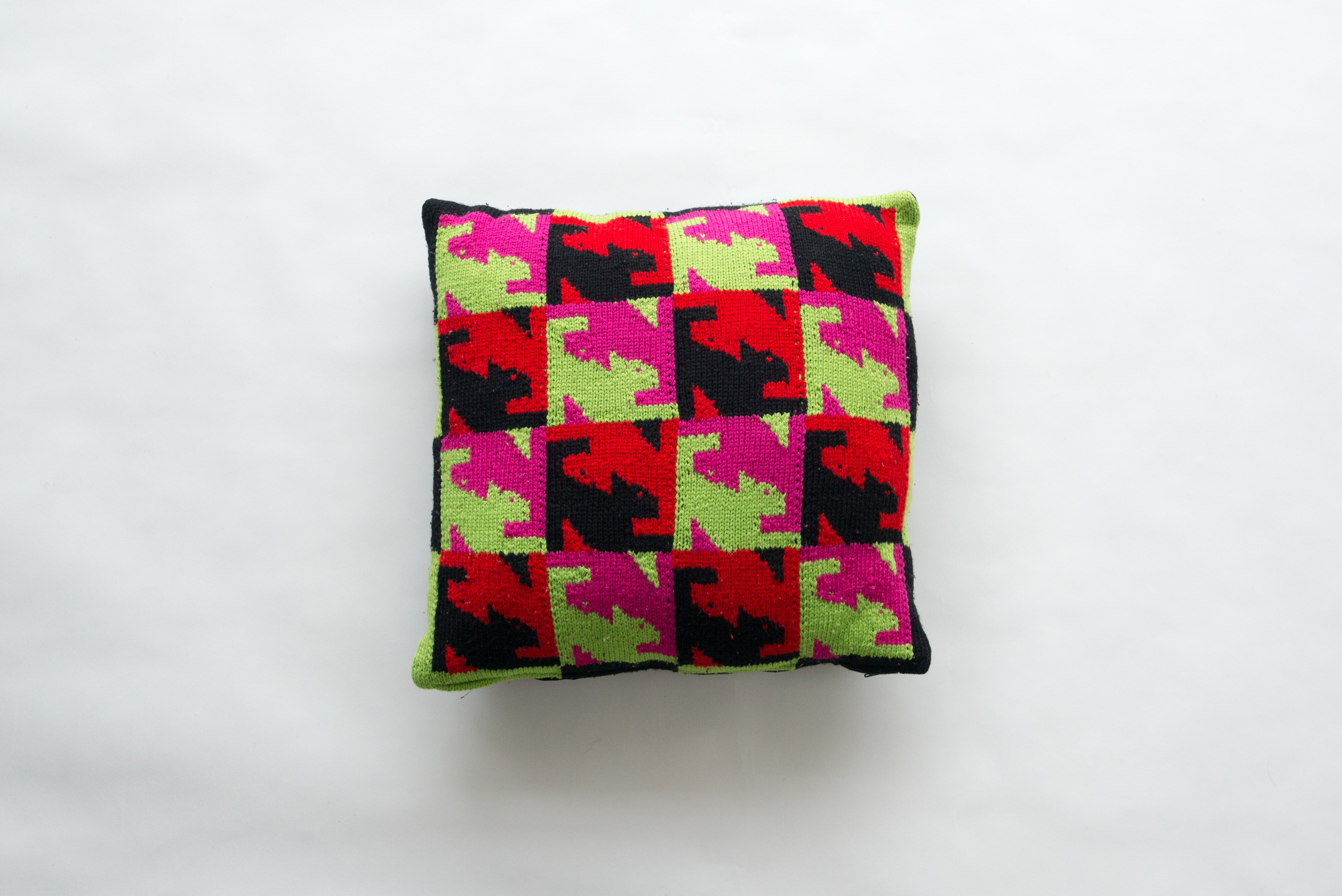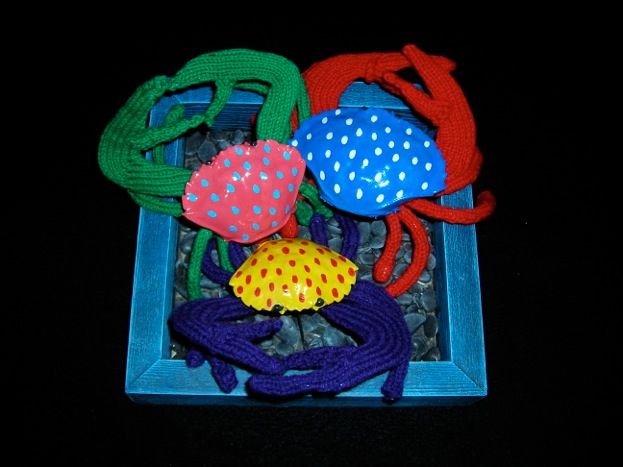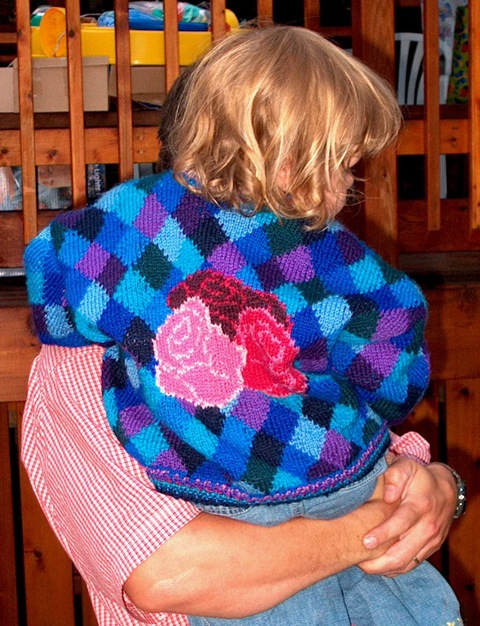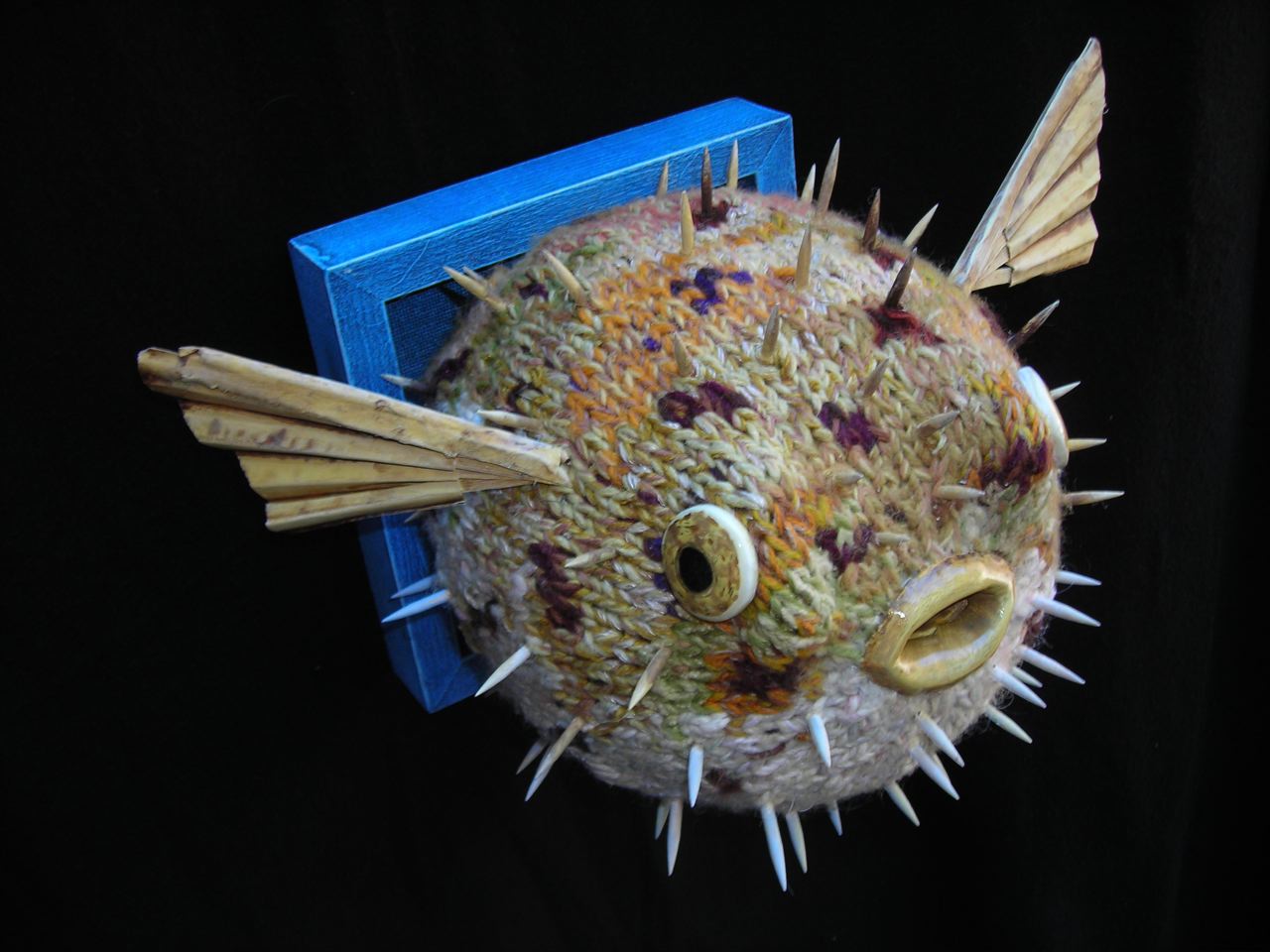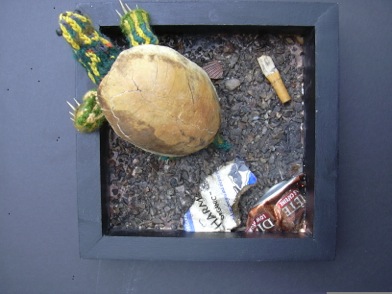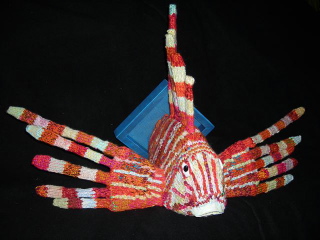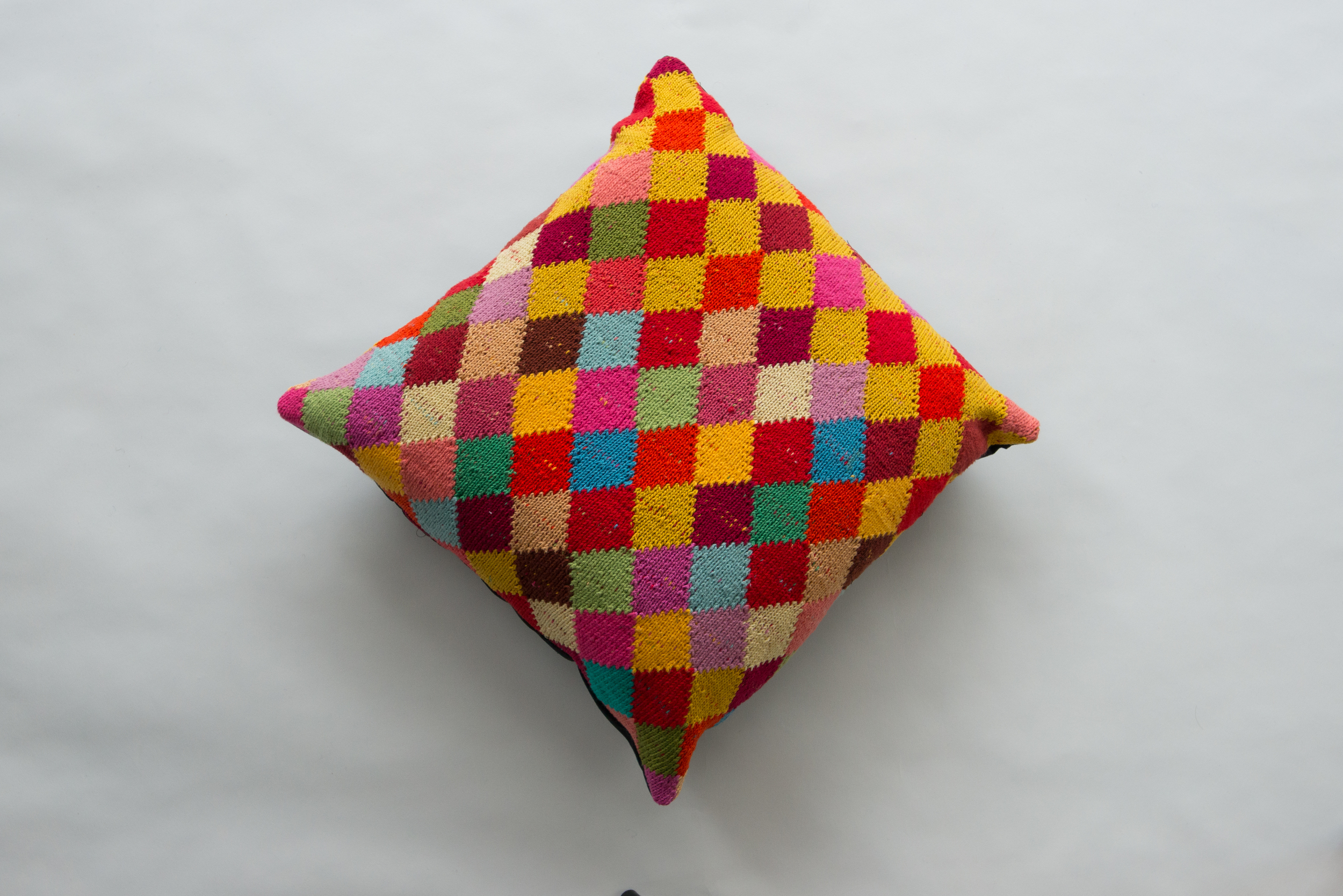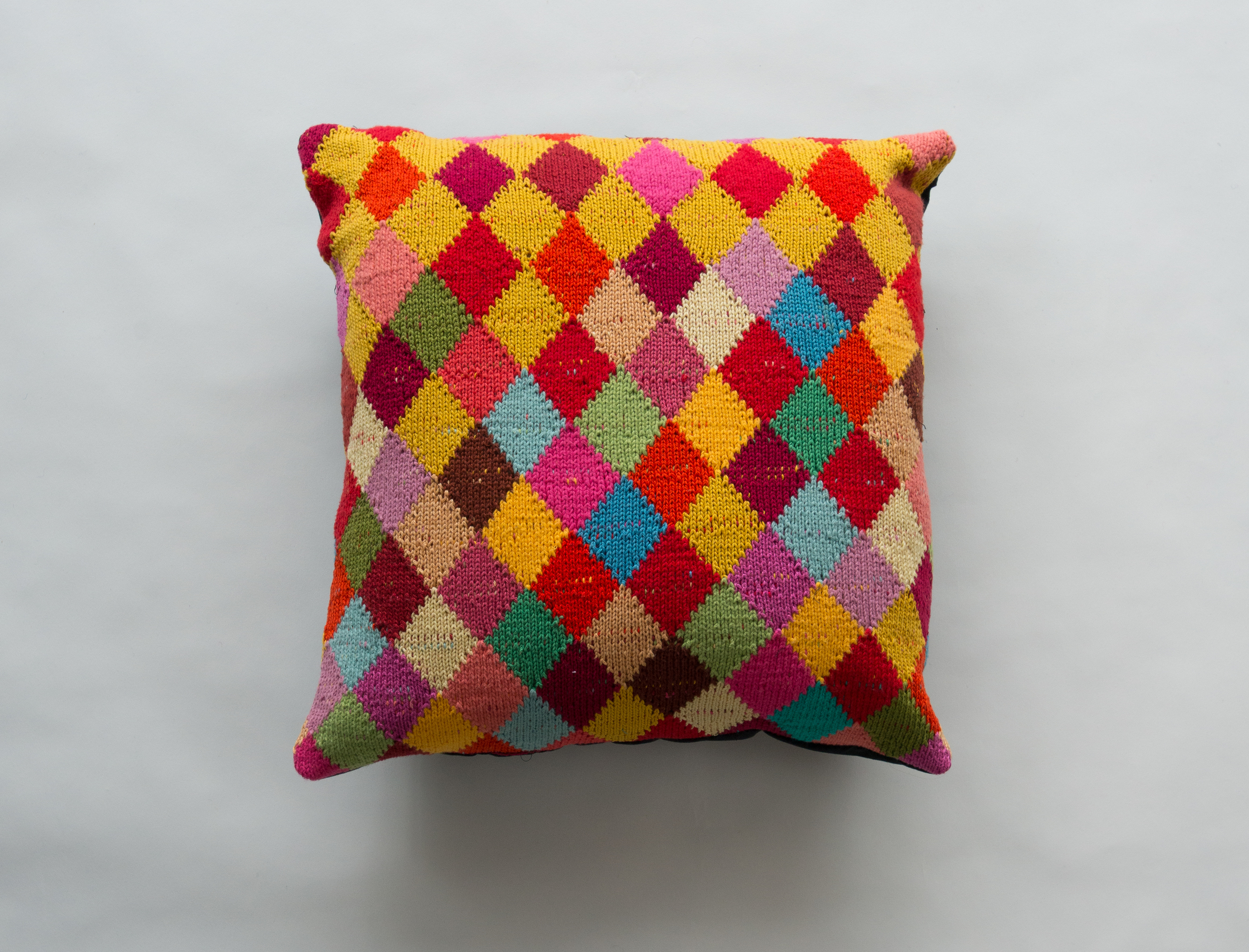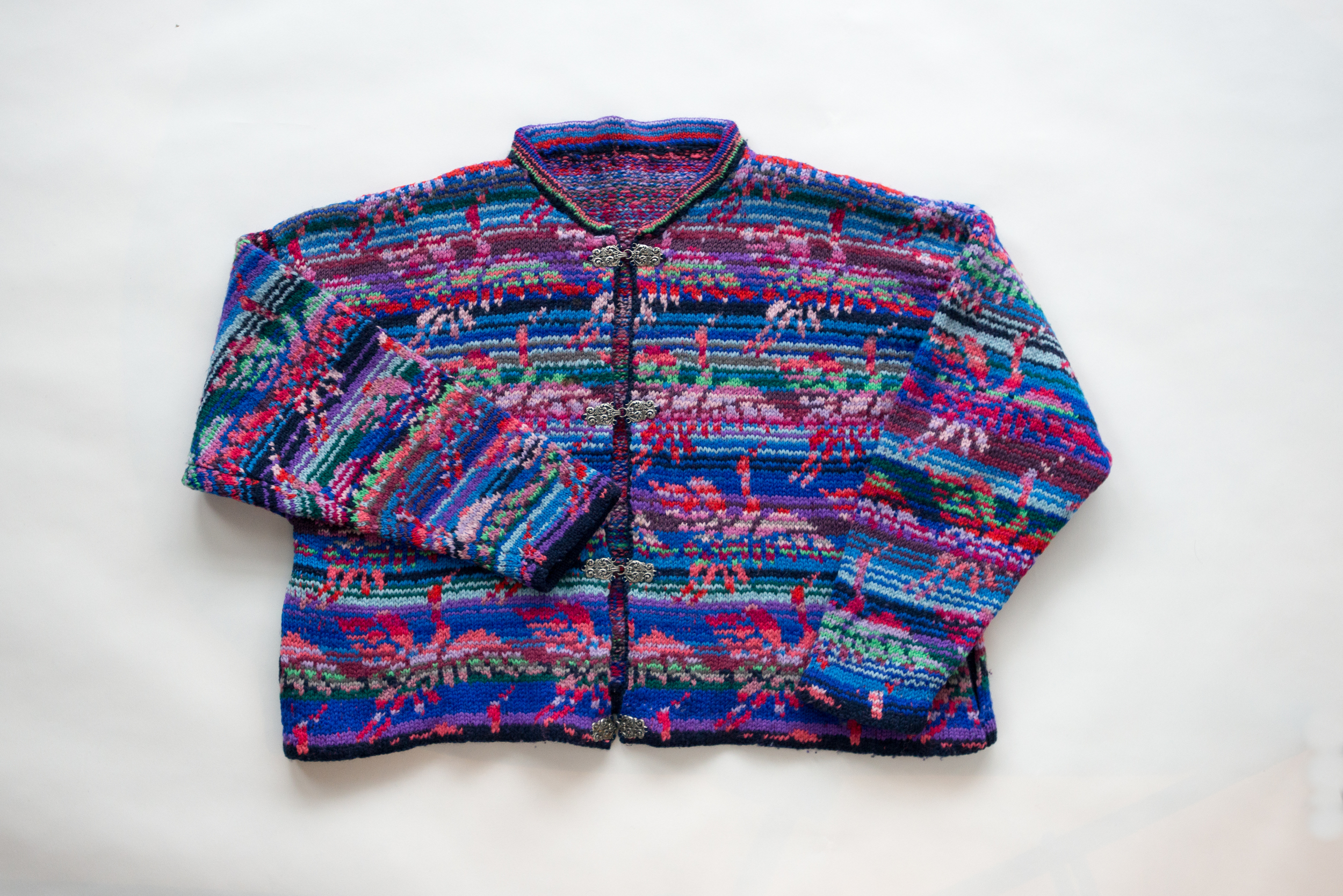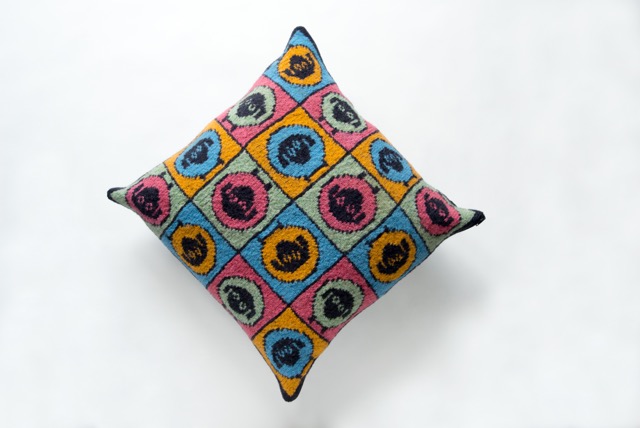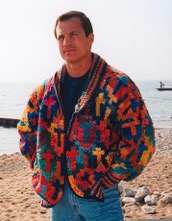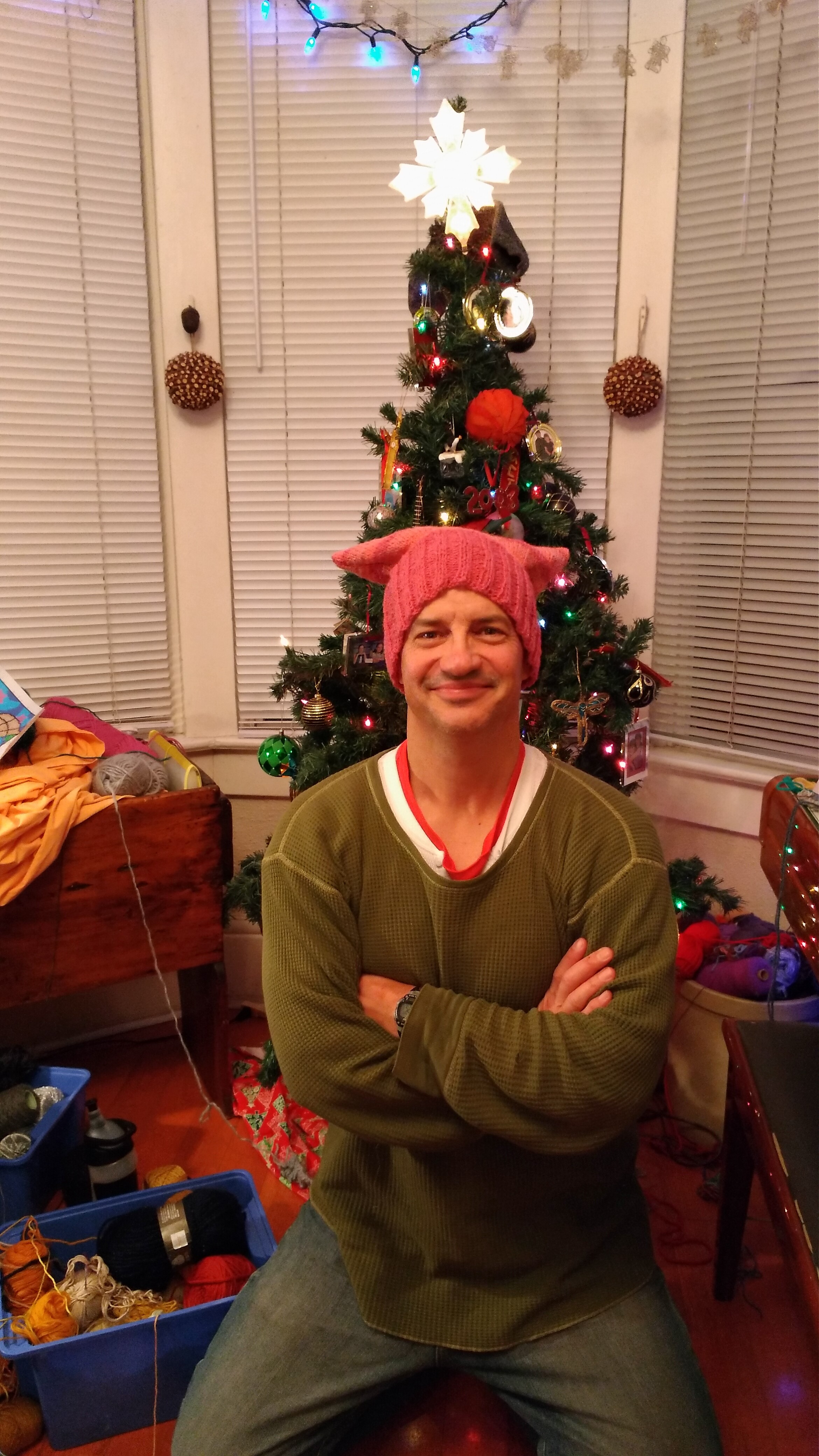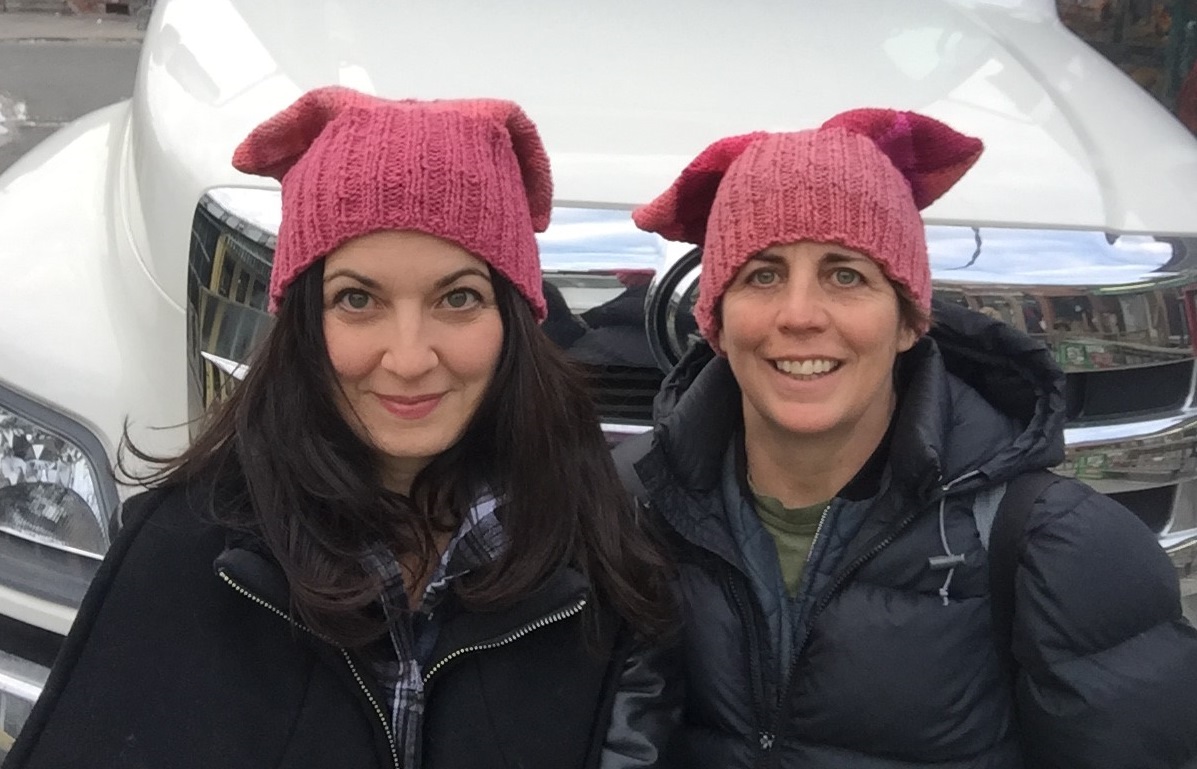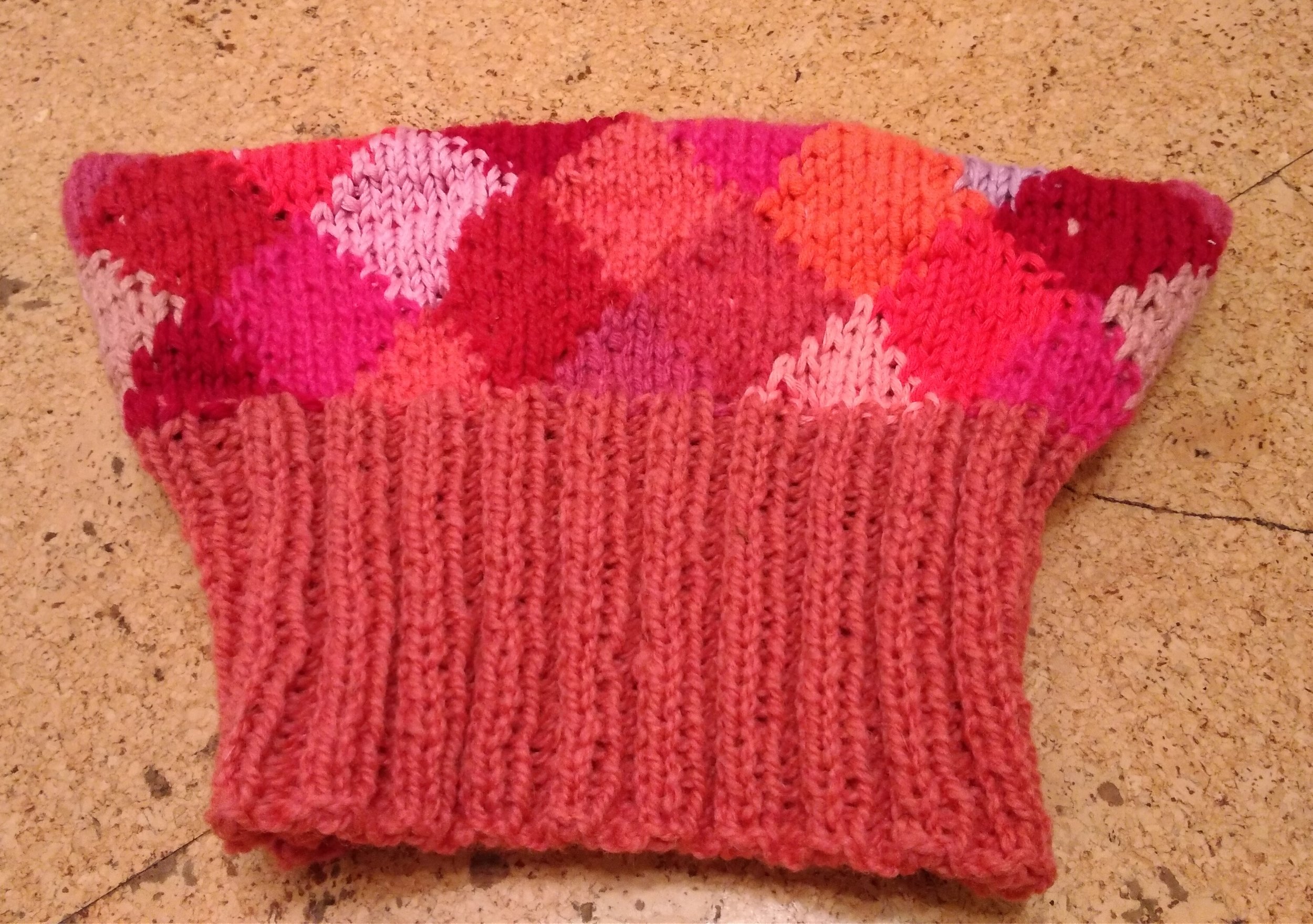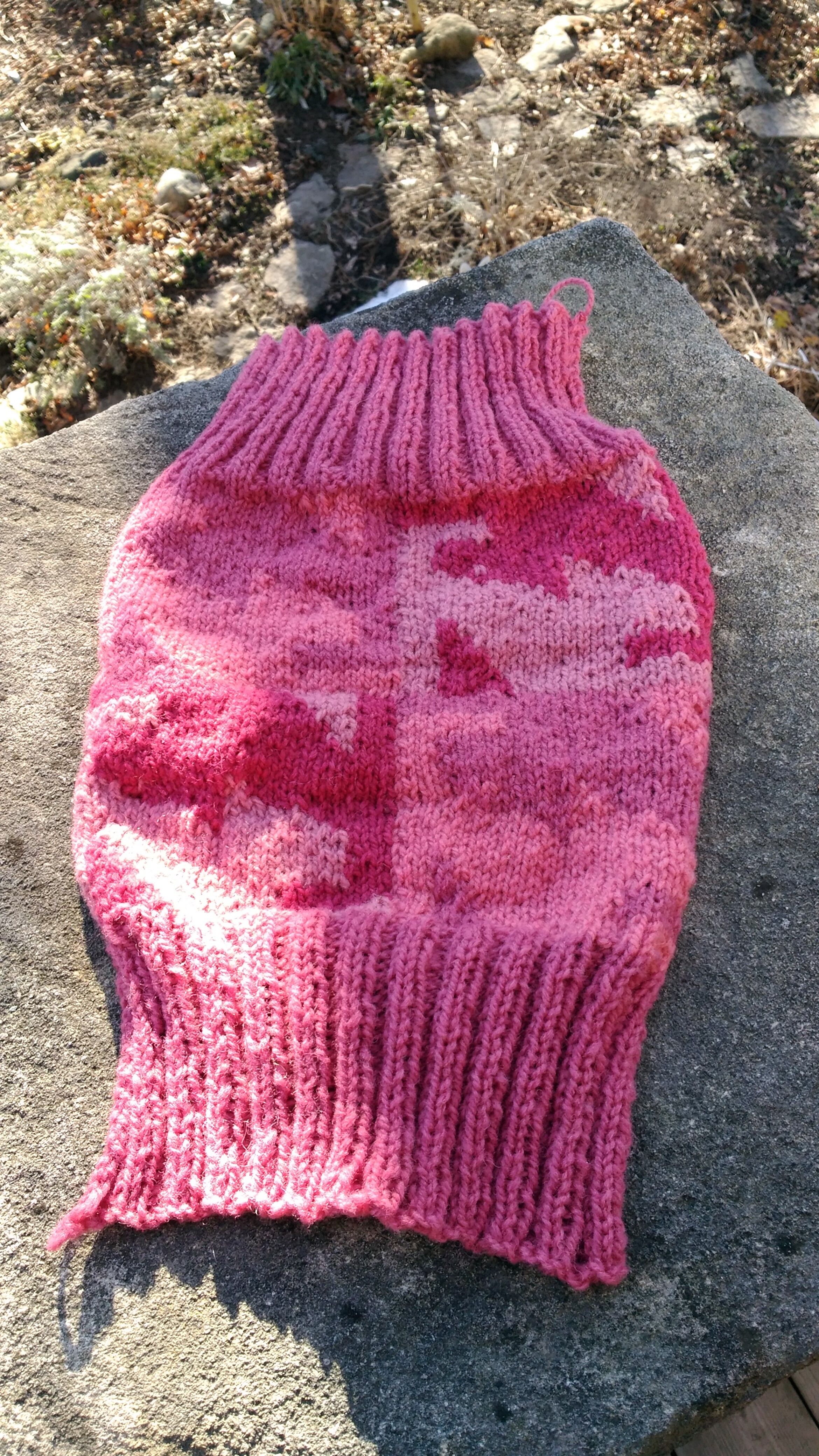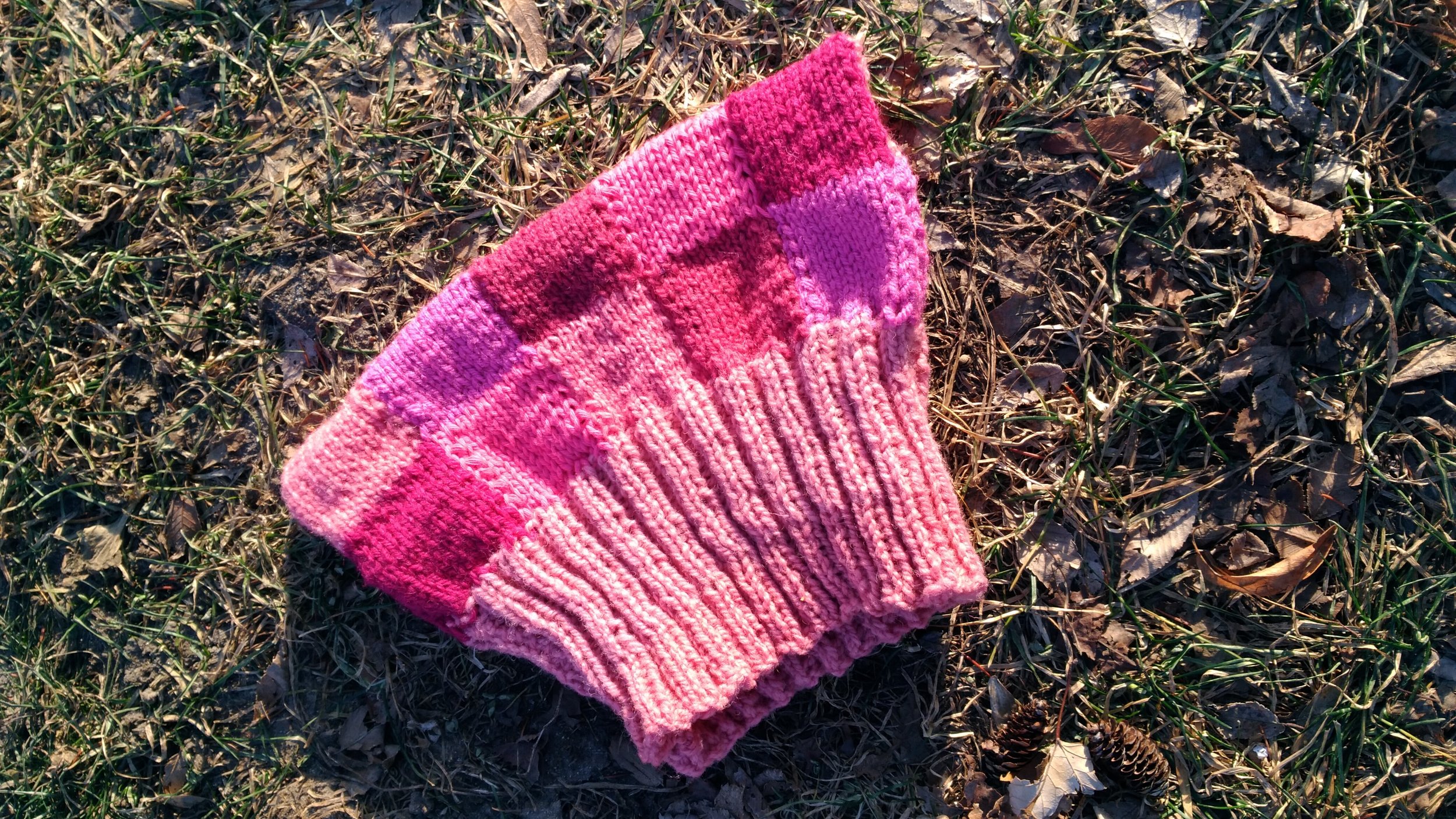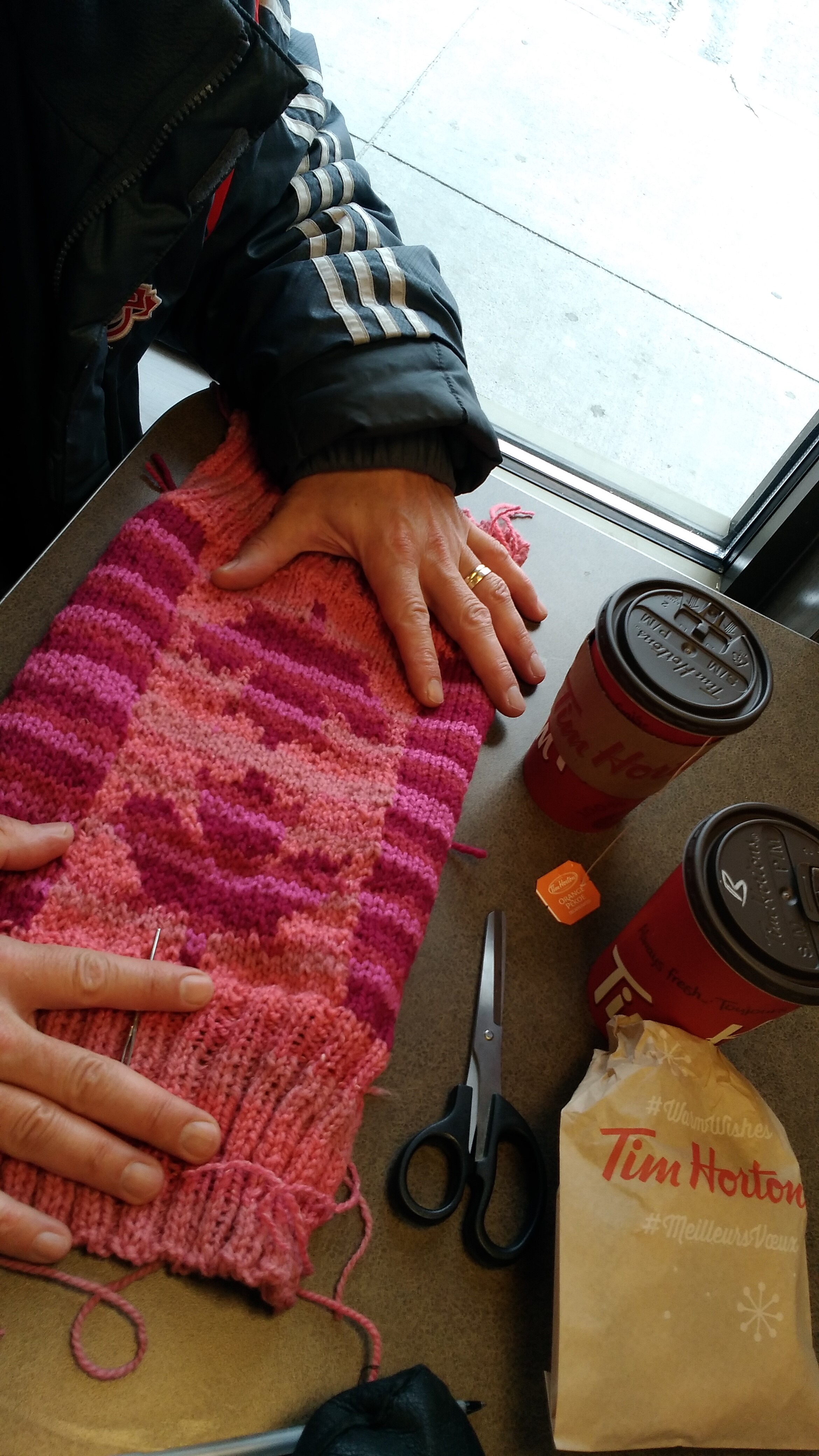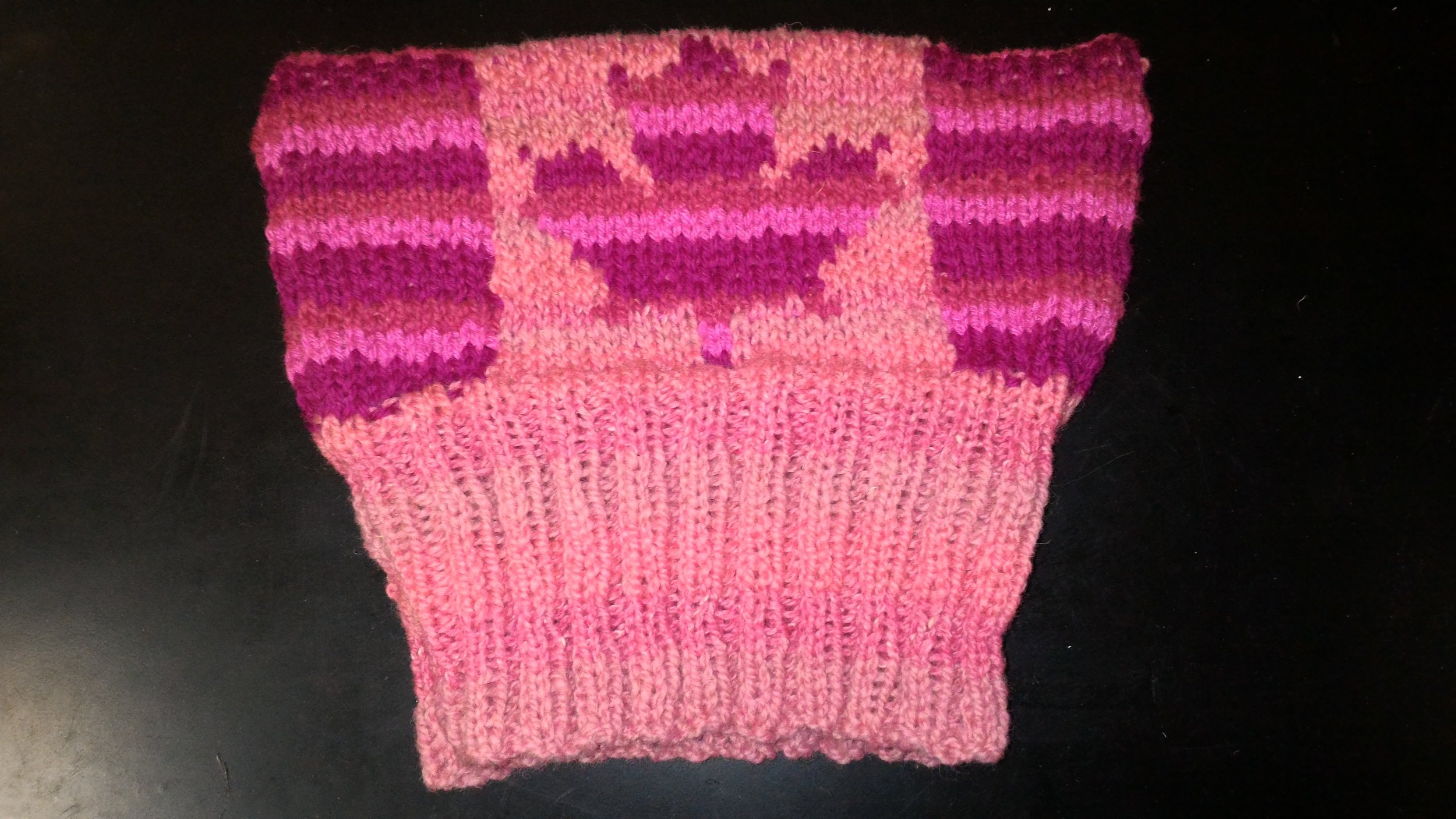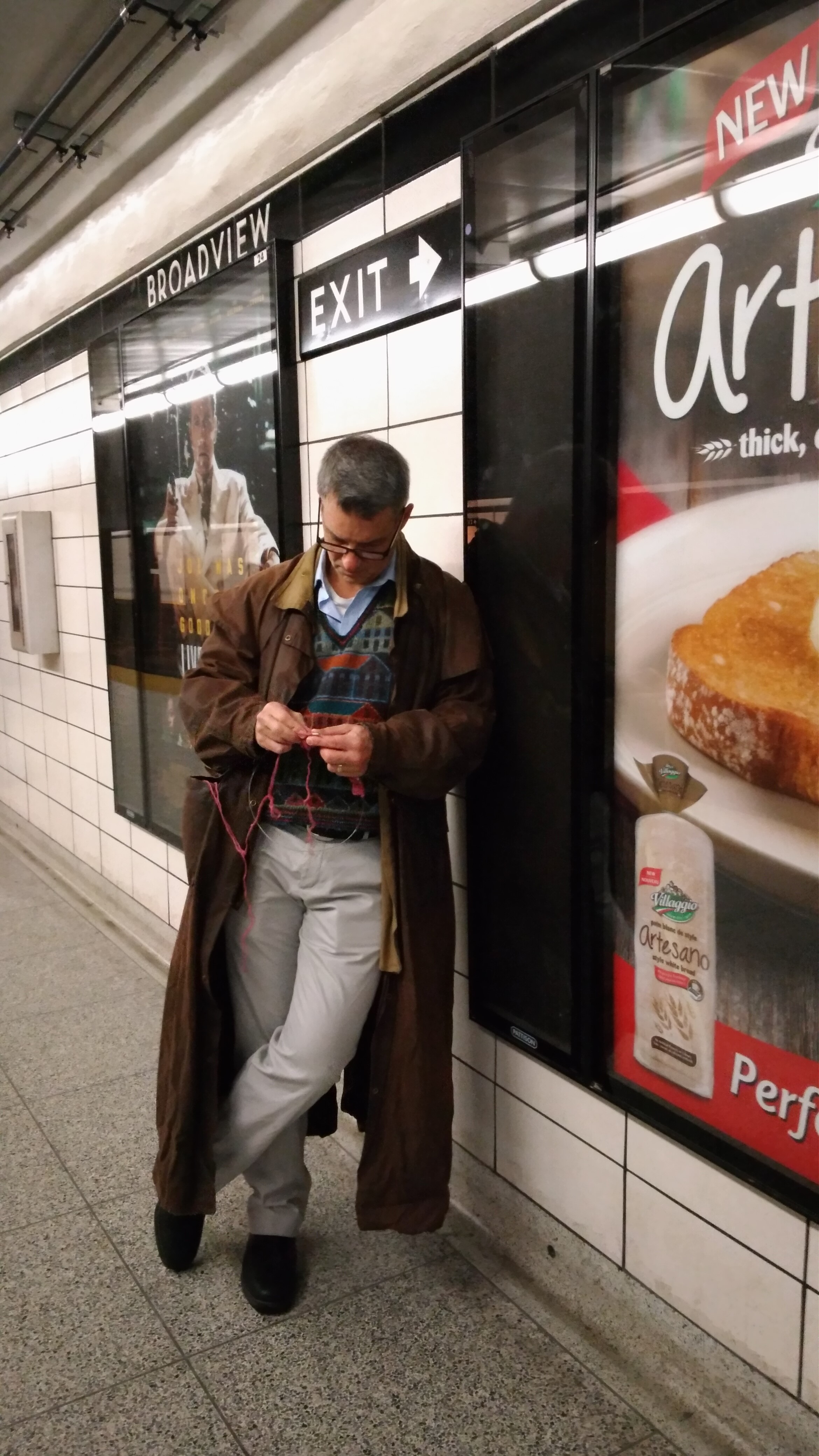



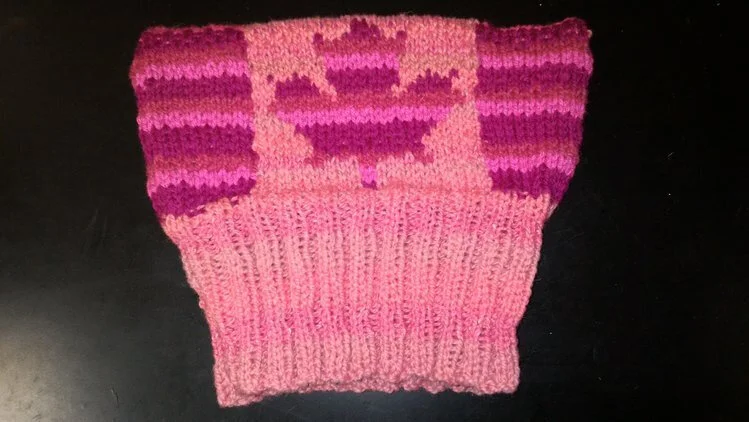


Knitting
Knitting
Join Kirk for a knit-along at the Stirling Book Company, Oct 19, 12 to 3pm
KIRKNITS
Kirk has been knitting since 1988. He began designing in 1996, and shares his appreciation for colour and complex design with world-renowned textile designers Kaffe Fassett and Brandon Mably, with whom he apprenticed in 1998 at the Kaffe Fassett Studio in London, England.
KIRKNITS IN THE PRESS
Kirk and has been featured in Enroute Magazine, Family Circle Knitting, Vogue Knitting, The National Post newspaper, Maclean’s Magazine, The Presbyterian Record, Vogue’s Knit.1 magazine, the online knitting magazine Knitnet, and The Grid. He has been interviewed on CBC Radio's “This Morning” about knitting and acting. A documentary about his biggest project, Stitched Glass, called “The Threads of Abraham” has been made by filmmaker Todd Witham.
KNITTING Workshops
Kirk has been a guest speaker for several knitting guilds, and has given workshops at the Textile Museum of Canada, The Aga Khan Museum, The Mississippi Valley Textile Museum and Fashion Arts Creative Textiles Studio (FACTS, Blyth).
Knitting Workshop at the Aga Khan Museum, May 2019, Photo by Jorjas Photography
Photo by Jorjas Photography
Kirk Dunn, The Knitting Pilgrim and creator of the Stitched Glass tapestries, offers workshops and knit-alongs. In his Colour With Kirk workshops, Kirk talks about the use of multiple colours in his knitting to create a tremendous range of depth, colour and texture, and shares the simple techniques he uses to achieve advanced results.
To participate in a workshop, please check out the WORKSHOPS section of our KNITTING PILGRIM page.
To book or host a workshop please contact us.
fruity knitting webcast interview
In the summer of 2023, we had the opportunity to take The Knitting Pilgrim to Austria and Germany. And while we were in Nurnberg, Kirk had the very good fortune of being interviewed by Andrea Doig of Fruity Knitting. Andrea and Kirk talked about his knitting origins, the inspiration for the huge knitted Stitched Glass Tapestries, his color-work technique, and the crazy rollercoaster journey of the project. Watch the full episode here.
THE CABIN BOY KNITS CANADIAN INTERVIEW SERIES - KIRK DUNN
Recently, Christopher Walker of Cabin Boy Knits interviewed Kirk about The Knitting Pilgrim, Stitched Glass and his knitting career on his Canadian Interview Series. Christopher introduces the online interview like this: “Where does one find inspiration when not even looking? In one's journey, are the answers from within or found elsewhere in something unseen or unexpected? And what's WOOL got to do with it!? Kirk Dunn's got a whole lot to say about that! He just may be the quintessential fibre artist with his vivid creativity, unscripted purpose, unwavering discipline and outlandish vision. The resulting three knitted "Stained Glass Window" panels and fifteen years' crusade became the axis to his One Man Show: The Knitting Pilgrim. The accomplished actor picked up knitting on the side, later studying with Kaffe Fassett. Unlike three generations of ministers before him, Kirk is not ordained but what he professes in his life's journey should be open to all who open their heart and mind to a better place...a better world. And the genius and colour-work in every stitch of those masterpieces should be glorified. Come MEET KIRK! He's kind, humble and did I say charming? You'll like him a lot!!”
Rebecca Robbins/ Fibre with Friends and More; Show and Share with Kirk Dunn
Rebecca Robbins, a talented weaver an the host of the Youtube channel Fiber With Friends And More, recently hosted Kirk for a Show and Share of his work — well, at least the work he had available at arm’s length. A few of the projects making an appearance here include the Henslow’s Sparrow pillow, COVID mask, Pufferfish, Rainbow Yarn Bomb, and numerous blankets, swatches and sketches. In the ensuing and lively conversation Kirk talks about what hooked him on knitting and how he uses multiple colours to achieve a rich texture and depth to his work.

Patchwork Pride Project
Patchwork Pride Project
Patchwork Pride Project
The Patchwork Pride Project is complete, and is now flying proudly from the tower of Morningside High Park Presbyterian Church. Here’s a video of the big reveal on June 15, 2024:
I offer my deep and profound thanks to all the people who contributed to this project. This could not have happened without everyone pitching in. Looking back, I can honestly say I did very little. All I did was put the word out. So many people responded so generously with their time and talent – knitting and crocheting squares, sewing, assembling, and engineering – I just tried to keep up. And, once again, a very special thanks to my partner and love of my life, the incomparable Claire Dunn, who once again watched as one of my little ideas ballooned into an enormous production and selflessly pitched in to support and carry us all over the finish line.
If you’d like to catch up on the history of this wonderful project, you can take a look at the history outlined immediately below, or trace it’s progress through my Blogs from March 24th to June 18th, 2024.
6” knitted squares… but they could be crocheted, too!
In June of 2023, I put up three Rainbow Yarn Bomb installations for Pride month. Two of them (one at Morningside-High Park Presbyterian Church, one at Todmorden Mills) were vandalized and stolen—a giant disappointment (see the photos below). The one that succeeded in staying up was located at Crieff Hills Retreat Centre.
There was wonderful support after the theft of the two yarn bombs. Lisa Easley, a knitter who lives in Georgia, reached out via my website and offered to re-crochet one of the yarn bombs herself, providing the yarn and all the work involved. I am thrilled about this and look forward to sharing her work when she sends it. We plan to place it on the same tree that hosted our original yarn bomb, just further up – past where the trunk splits into two big vertical branches. We are hoping that no one will be able to do it mischief there. A massive thank you to Lisa for her support—and her crocheting. It’s a lot of crocheting.
Crieff Hills has asked for another Rainbow Yarn Bomb this summer, so I’m excited about that.
And at Morningside-High Park, fellow knitter and congregant Sandy Takeda and I have decided to try something new: what we called a Patchwork Pride Project, made of 6” knitted (or crocheted) squares, all the colours of the rainbow—something we could hang on the building up high so unhelpful interlopers couldn’t easily reach it. We put out the call, and had an amazing number of knitters responded by knitting squares. We invited them to use the very simple pattern below.
Pattern for 6” knitted square, worked on the diagonal.
We originally thought we get 276 squares, enough to make a pride flag that was 12 squares wide, by 24 squares long. We ended up with 1176! The final version of the Pride Flag was 24 squares wide by 42 squares long, using at total of 1108 squares. And it looks Glorious:

Stitched Glass
Stitched Glass
STITCHED GLASS
In 2003, Kirk was awarded a significant Chalmers Foundation Fellowship through the Ontario Arts Council in support of Stitched Glass, an installation of 5.5’ x 8’ tapestry panels, knit in the style of stained glass. The work explores the commonalities and conflicts of the three Abrahamic faiths: Judaism, Christianity and Islam.
Kirk’s background as a PK – a preacher’s kid - inspired his interest in religion, spirituality, and interfaith empathy. With Stitched Glass, he found a way to combine both his faith and textile interests.
Directed by Jennifer Tarver, and performed by Kirk, the show recounts Kirk’s artistic and spiritual journey of hand-knitting the giant project, and his hope to contribute to the vital conversation about xenophobia, anti-Semitism and Islamophobia, dealing with internal and external strife, and fear of the other.
The show, produced by Ergo Arts Theatre, premiered at the Aga Khan Museum’s Auditorium in May, 2019 and has already toured Ontario for 49 shows. It was given 6 out of 5 stars by CFMU Hamilton, 5 out of 5 stars by Mooney on Theatre, and was named a Critic’s Fringe Pick in Toronto, Ottawa and Hamilton, as well as One of ‘Top Ten Shows to See in May 2019’ by NOW Magazine. It tells the story of a journey that you need to experience.
Stitched Glass, the documentary
Kirk could not have foreseen the scope of the work. It took 15 years of research, design and knitting, to finally complete all three tapestries. But then the question became, how to share the installation with audiences so that it could do more than just sit in a gallery? Kirk’s profound desire was to use Stitched Glass to create an opportunity for interfaith dialogue. In 2018, Kirk and his wife, Claire Ross Dunn, co-wrote The Knitting Pilgrim, a multidisciplinary one-person theatrical experience that uses storytelling, image projection and the Stitched Glass panels – collectively over 90 pounds of knitting – as its set.
Huge thanks to fabulous filmmakers Ian Daffern and Omar Majeed for the great short 'Stitched Glass - The Documentary.' Weirdly wonderful to see my knitting pilgrimage captured on film. And congrats winning the Best Short Documentary award at the 2021 Forest City Film Festival ! Well done!
To book the 65-minute show and 30-minute post-show talk-back, please contact us.
Photos by Jorjas Photography

Gallery
Gallery
THE HENSLOW’S SPARROW PILLOW
My wife and the love of my life (handy how that worked out), Claire, recently published her first novel, At Last Count. It took her 15 years to write. As someone who took 15 years to knit his own project (check out The Knitting Pilgrim oy), I completely understand.
At Last Count features a birdwatcher who depends on Obsessive Compulsive Disorder in her attempts to control the uncontrollable. This pillow is a rendering of an image of a Henslow’s Sparrow—a bird rarely seen on Amherst Island, Ontario, where most of the narrative takes place—and uses yarn from Topsy Farms, located on the West End or “Head” of the island. I love the natural, earthy tones the doubling of Topsy fingering weight yarns provides. In the book, the Henslow’s Sparrow is a symbol of hope, survival, and a better world to come. This one’s for Claire.
RAINBOW YARN BOMB
The Todmorden Mills Heritage Museum and Arts centre proudly hosted the yarn bomb during Pride Month of 2022. It offered a splash of colour to brighten the day of many a commuter on their way up Pottery Road hill. There are a great many other such Heritage sites around Toronto — say, that gives me an idea….

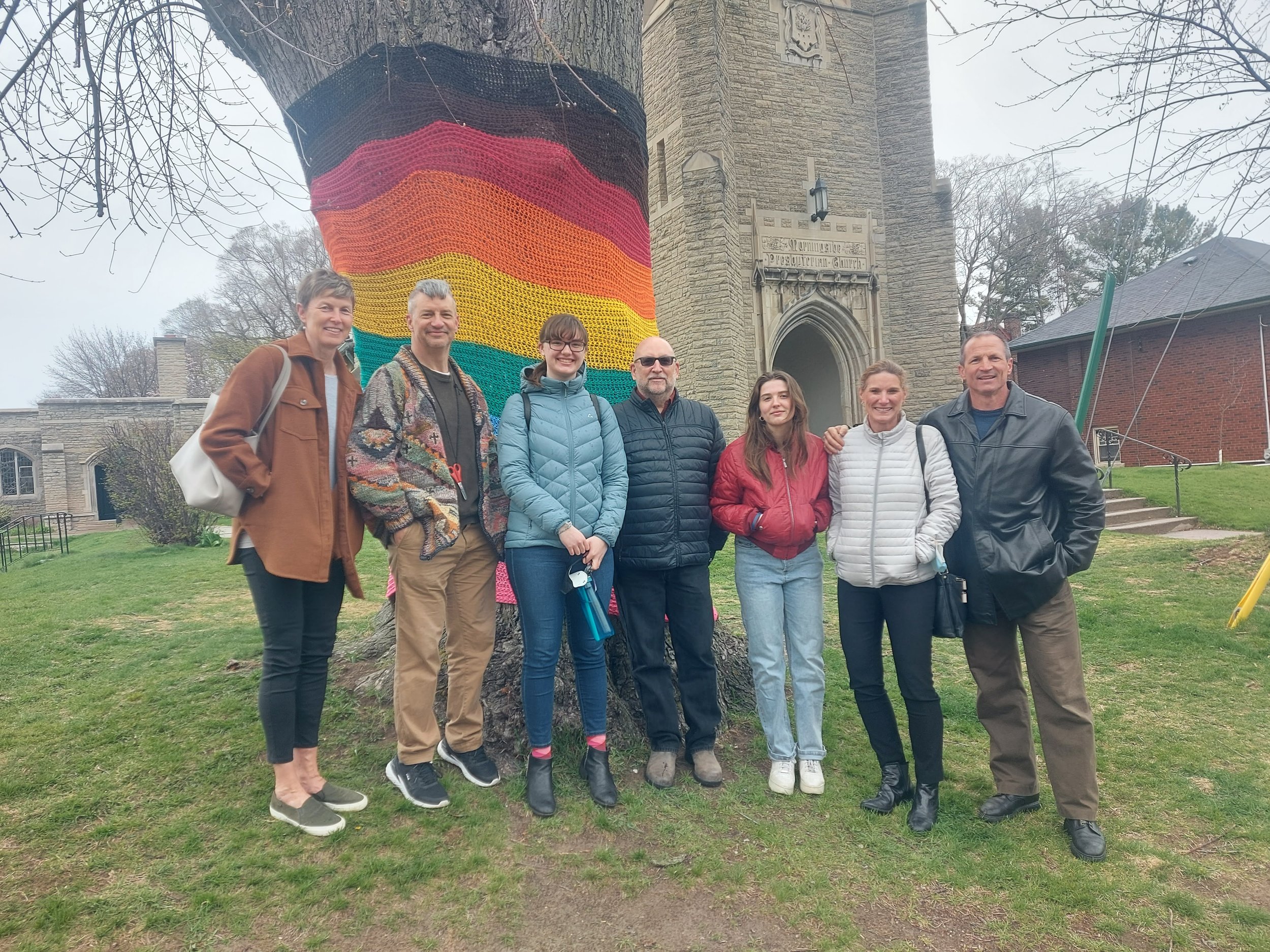
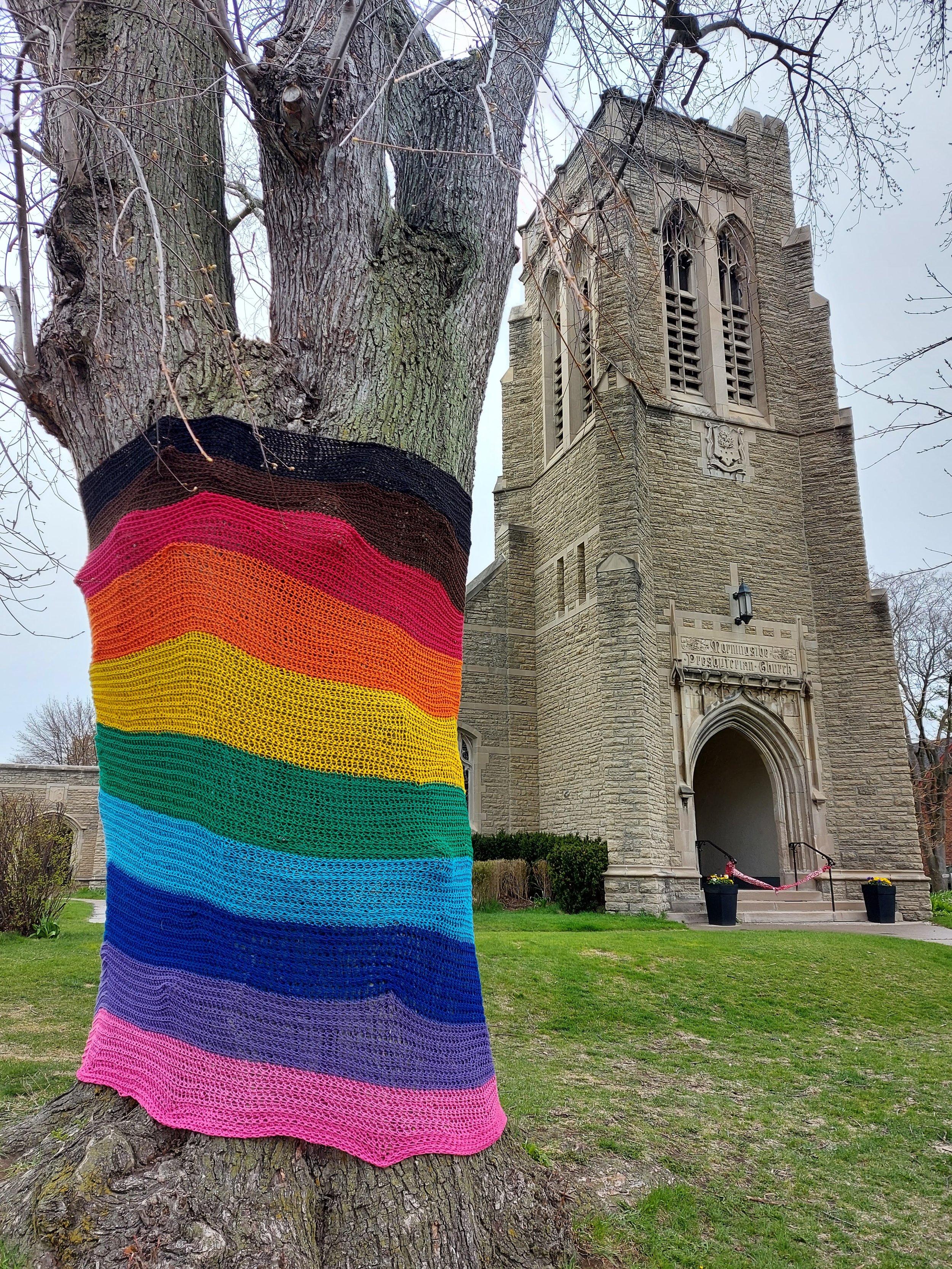
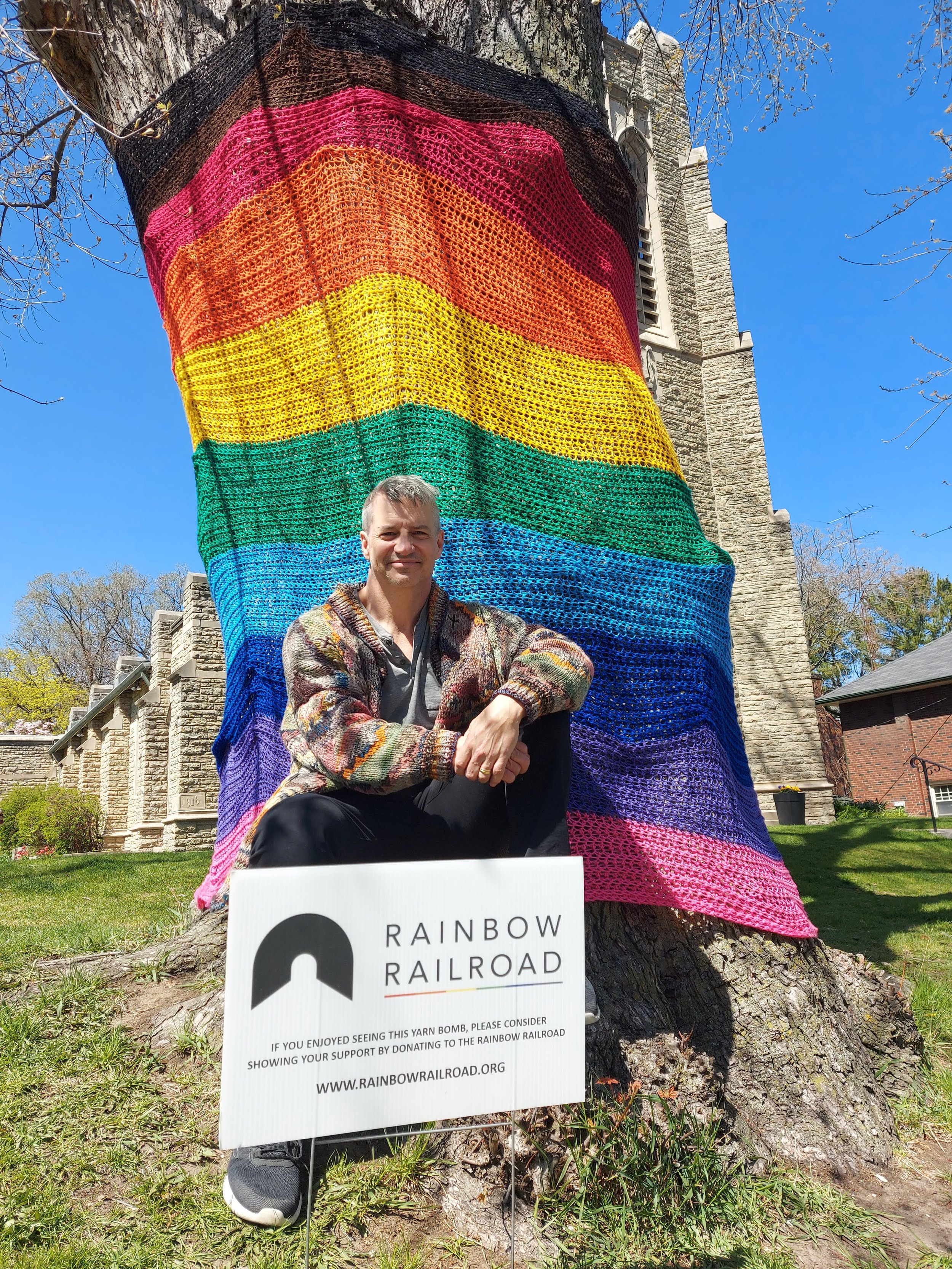
The Rainbow Yarn Bomb goes West. I’m happy to report that the tree sweater enjoyed temporary residence in Burlington in the Spring of 2021. Here’s to spreading a little bit of colour and joy in these troubled times.
The Yarn Bomb at its inaugural installation location — our front yard. It was designed to travel, but I’ve got to admit, it was hard to let it go. It was nice to see some serious Pride colour when we looked out our window, and we had fun watching people stop on their way by to take it in and maybe grab a selfie. Then again, I figure selfies are good, but selfish isn’t: time to share the love and let the rainbow roam.
Photo Credit: Georgia Kirkos
Many thanks to Jennifer Triemstra-Johnston of Fabric Arts Creative Textile Studios (FACTS) of Blyth, ON, for sewing the pulpit fall to a thick woolen backing thereby allowing it to “fall” properly from the pulpit.
RAINBOW WATCHCAPS
Here’s a way to wear your heart on your sleeve. Well, on your head, anyway. Craftivism is great because it works on so many levels; be creative, stylish, make a statement, and ally yourself with some rainbow warriors. Crafts for allies.
HURON COUNTY SAMPLER BLANKET
This Huron County Sampler Blanket is the result of a fun 3-hour workshop I led for the Fashion Arts Creative Textiles Studio (FACTS), in Blyth, ON. It was designed to tie into the Huron “Hygge.” Hygge is a Danish word (pronounced hue-gah or hoo-guh) that means coziness, contentment and well-being. This past winter, especially during COVID, Huron County encouraged everyone in the area to cozy up to the fire, get outside to enjoy the snow, or take part in winter activities – even if virtual. FACTS got on board by inviting me to share how to knit a simple blanket with Huron County-themed squares. I demonstrated how I designed the squares, and how participants could design their own squares, too. We went through techniques for knitting intarsia with multiple colours and talked about how to assemble the squares to make either a small lap or children’s blanket, or a larger bed blanket.
On the property of Morningside-High Park Presbyterian church is a big old tree, just over twelve feet around. Too big for my first tree sweater, so I thought I’d better knit another one. In May of 2021 we wrapped this monstrous maple to approving horn honks and shout-outs from passers-by.
The Yarn Bomb in Burlington, April 2021
On the left, The Travelling Community Support RainbowYarn Bomb takes a trip to the West End of Toronto. A little something to cheer up the February Blahs. And a big thank you to all those who donated to Rainbow Railroad to support the project.
PULPIT FALL
This is a pulpit fall, or banner, I designed and knit for my church, Morningside-High Park Presbyterian. It is my response to, and support for, the Presbyterian Church in Canada’s vote in the summer of 2019 to fully include LGTBQI clergy and community. God’s Love Includes Everyone.
CITYSCAPE AFGAN
Afghans are a great way to explore geometric patterns. This pattern, known as ‘Cityscape,’ is a variation of the old quilting design “Tumbling Blocks” retooled for knitting. I used his favourite greens and pinks, but any colours can be used. The hues are simply divided into groups of dark, medium, and light, and each group is used for one of the three faces of the blocks.
SYMMETRICATS PILLOW
I was approached by A Needle Pulling Thread to design a simple pillow with the colours of that month’s issue: green, pink, black and red. It appeared in the 2009 issue of the magazine.
FOLK ART CRABS
I found these crab shells off the coast of a friend’s wonderful country home in Mahone Bay, Nova Scotia. Idried out the shells, shellacked them, and painted them in traditional Nova Scotian folk art colours. Ishaped the legs with modeling wire and knitted over them.
BLUE DIAMOND ROSE
I designed this sweater for my eldest child, but they were a picky dresser at the time, and didn’t want to wear it until they had almost outgrown it… oh well!
NOT FOR DINNER
For this puffer fish, I used my grade school arts and crafts recall to papier maché a balloon for the body, and then knitted around the form. I used barbecue skewers for the puffer fish’s spikes, and plumber’s putty for the painted eyes.
North Pacific Gyre Jellyfish
While I tend to prefer organic materials, sometimes the thesis of a piece cuts against that grain. North Pacific Gyre Jellyfish focuses on the effect of photodegraded plastic particulates in oceanic ecosystems. Where organic debris will biodegrade, plastic merely disintegrates into ever-smaller pieces while remaining a toxin-containing polymer. These plastic pieces are eaten by jellyfish, which in turn are eaten by larger fish.
To reflect the growing presence of synthetic materials in the aquatic environment, I cut a plastic sheet into one long continuous strip, combined it with yarn, and used it to knit the body of the jellyfish. The tendrils are old ribbons, synthetic yarns, and discarded wires and metallic cables. The resulting Frankenstein sea creature is a hyperbolic look into the future of sea-life on this planet.
Painted Turtle, Extinct
I found the shell for this artwork in pieces at the bottom of the lake at my wife’s family’s cottage in Northern Ontario. I dried out the pieces, glued them together again, and then knitted the turtle body underneath it.
Escher's Salamander
I borrowed Escher’s salamander design, which uses shading techniques to make the salamander look as if it’s coming out of the page. Then I knit it three dimensionally to make it come out of the shadow box’s surface.
LIONFISH (INVASIVE SPECIES)
The venomous lionfish is an invasive species, so I thought it would be appropriate to design it overtaking the confines of the eight-inch shadowbox. As with the puffer fish piece, I applied papier maché over a form for the body, and then knitted around the body. I built the fin rays from coat hangers, and then knit something very much like a long-fingered glove with which to cover them.
Crazy commedia pillow
This simple geometric pattern started out as red and gold diamonds. But as the piece went on, changed the hues a bit… and then a lot. By the end of the swatch, the basic red and gold theme was long gone and the harlequin pattern often associated with Commedia Dell’ Arte had indeed gone crazy.
ONE THOUSAND CRANES
I designed this “One Thousand Cranes” sweater for my mother after she survived breast cancer. I was inspired by the story of Sadako Sasaki, the little girl who developed leukemia after the atomic bomb was dropped near her home in Hiroshima in August, 1945. After she was admitted to hospital, Sadako’s wish was to fold 1000 origami cranes so that, as the Japanese legend goes, she would be granted a wish. She died from her illness not long thereafter. This “One Thousand Cranes” sweater won a design award from Knitnet Magazine.
stars and bars
In keeping with the contra theme, Stars and Bars was presented to a good friend and very talented director and dramaturge in return for her outstanding work in bringing one of my plays for young audiences to the stage. I took inspiration from MC Escher's drawings of geometric tile patterns of Alhambra, in Granada, Spain.
FLEURS DE LIS
In May of 1998, I apprenticed at the Kaffe Fassett studio in London, England. During this time I was generously hosted by a good friend of the family who was an accomplished linguist and busy at the time picking up French as her fifth language. Fleurs de Lis was my way of saying thanks for the incredible hospitality I enjoyed chez John and Klari Dormandy.
COLOURFUL CROSSES
I designed this sweater for my father, Reverend Dr. Zander Dunn, a third-generation Presbyterian minister with a love of the colour orange.
Topsy Turvy Pillow
This pillow design was inspired by Topsy Farms, a wonderful yarn and lamb producer on Amherst Island. Made with their all-natural, 100% Canadian wool, milled at MacAusland’s Woolen Mills on Prince Edward Island, Topsy Farms owners Sally Bowen and Ian Murray have long supported my knitting work, and it gives me great pleasure to support theirs. This pillow kit will soon be available through Topsy Farm’s website here. To pre-order a kit, contact my studio or Sally.
Topsy Turvy, Stars & Bars, One Thousand Cranes, Crazy Commedia, and Cityscape photos by Jorjas Photography

Pussyhat Project
Pussyhat Project
The Pussy Hat Project is a fantastic idea that LA-based screenwriter Krista Suh, and her architect friend Jayna Zweiman, came up with to protest the comments made by Donald Trump about grabbing women’s genitalia in an unsolicited manner. Suh had decided to go to the Jan 21, 2017 protest March on Washington and knew it would be cold, so she wanted to knit herself a hat. She and Zweiman realized that if more women wore the same hat, and they could design a hat that symbolized their objection to Trump’s comments, it could be both a fashion and political statement. Kat Coyle, the owner of The Little Knittery, the knitting store where this conversation took place, was fast to supply a pattern that would be easy enough for beginner knitters, and could be customized by more experienced knitters. The pattern is available on the Pussyhat Project website and here’s a how-to video. I loved this idea, but was really moved to action when I heard that my friend Tracey Erin Smith, Artistic Director of Soulo Theatre, was herself going to the Jan 21 march. She co-created the Soulo Theatre March on Washington project with Savoy Howe, founder of the Toronto Newsgirls Boxing Club. Together, they will be leading the bus in creative exercises on the way down to Washington, they’ll participate in the march, and will talk about their experience on the way home. They’ll be creating a collective show about the entire trip to be presented at the Soulo Theatre Festival in 2017.
I knitted a bunch of pussy hats for both Tracey and Savoy, as well as friends participating in the Toronto edition of the March on Washington, customized them all, and enjoyed my protest knitting thoroughly.

ARTISTIC STATEMENT
ARTISTIC STATEMENT
A Few Thoughts about Knitting
I have been knitting for 30 years…
With influences like American/British knitting designer Kaffe Fassett, M.C. Escher and the Impressionists, I am fascinated with colour and geometric patterns. I began designing my own garments, and later transitioned to installations to explore how to use knitting in unexpected ways. Most often relegated to ‘craft’ instead of ‘art,’ knitting – an ancient technique that has been around since the first millennium AD – is deceptively simple, primarily using a binary stitch – and yet can produce works of great resonance, complexity, beauty, and meaning.
My body of work re-imagines knitting in two ways: as complex and colourful three-dimensional unexpected things from the natural world, and large-scale installations. My series of three-dimensional marine life organisms – a lion fish, puffer fish, jellyfish, turtle, crabs, a salamander – are meant to take people by surprise, so that they see what knitting is capable of – and so that they see the many colours and wondrous shapes of our natural world, and feel connected to it, a part of a greater whole. I would like knitting to be regarded as an art that is tangible and accessible enough so that it can speak to many, and yet also produce startling, meaningful, awe-inspiring and beautiful works, and not just hats and scarves.
My most profound belief in life is this: that empathy is the path to understanding and the key to conflict resolution. Knitting for me is the artistic manifestation of that goal: symbolically, it weaves together yarn to produce an interlocked pattern, just as I hope people can be knitted together, through empathy, into a community.
Knitting also gives me a great opportunity to work with vibrant and multi-hued colours and textures – another perfect symbol of the variety of humans on the planet, with different colours of skin, background and stories, who I hope can come together in empathy and understanding no matter what they look like or where they come from.
I use three unique techniques in my knitting that I believe set me apart: First, I choose colours and colour combinations (often using 5-7 strands at once) not before I begin my project, but on the fly, as I knit – what I call ‘improvisation on the needle.’ Second, I twist the yarns as I knit to produce an Impressionistic pointillism effect: the twisted yarns, when using multiple strands, simulate small dots of paint. And third, like the Impressionists, I use complementary colours (adding orange to blues for example) to make the colour choices rich and give them depth. This technique produces a luminous effect, as if there were light shining on, and through, the knitting.
Knitting is both an accessible – anyone can do it – and wonderful, malleable art that is capable of making almost anything that is gorgeous, full of colour and meaning. I am privileged to work with this wonderful art form.





















